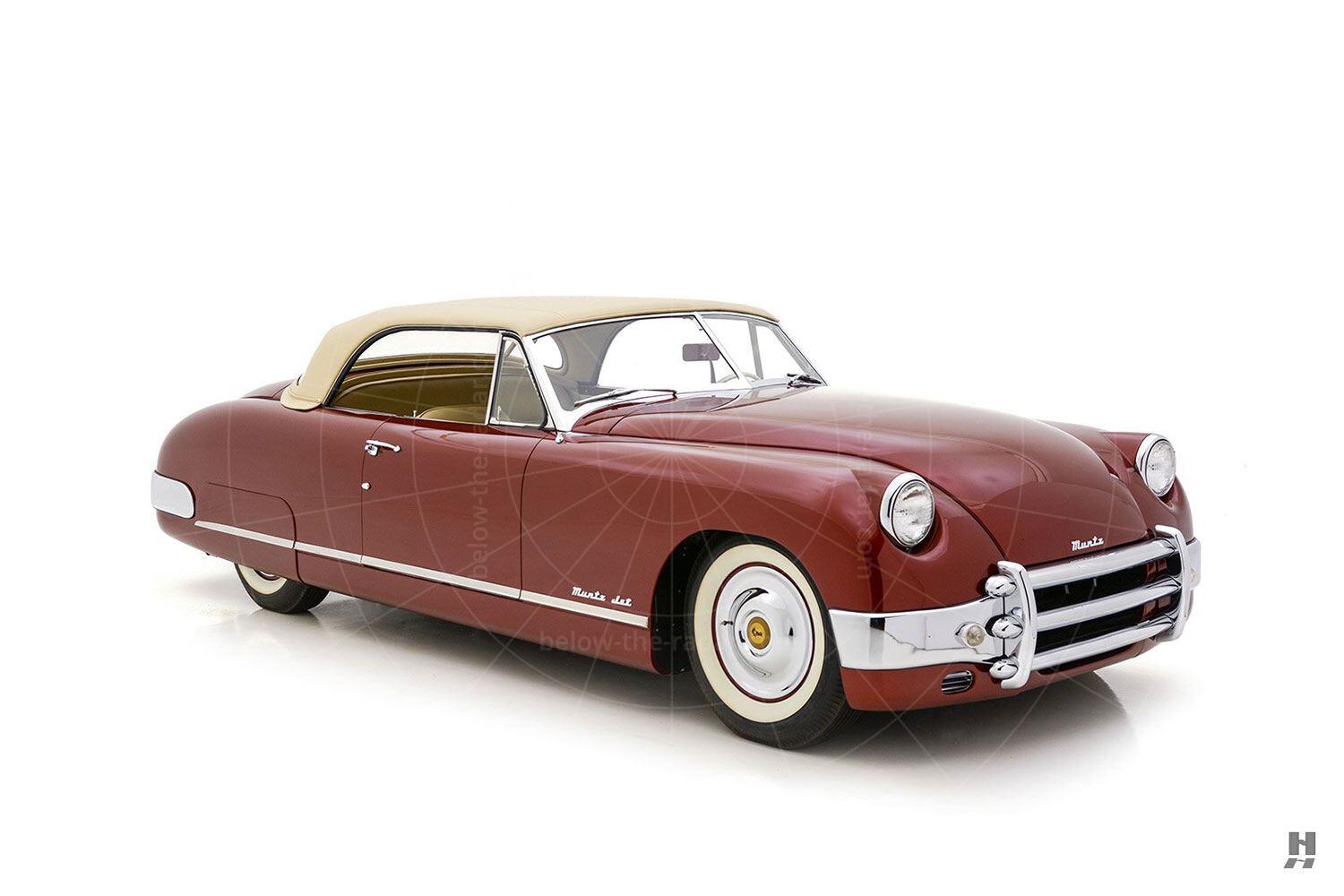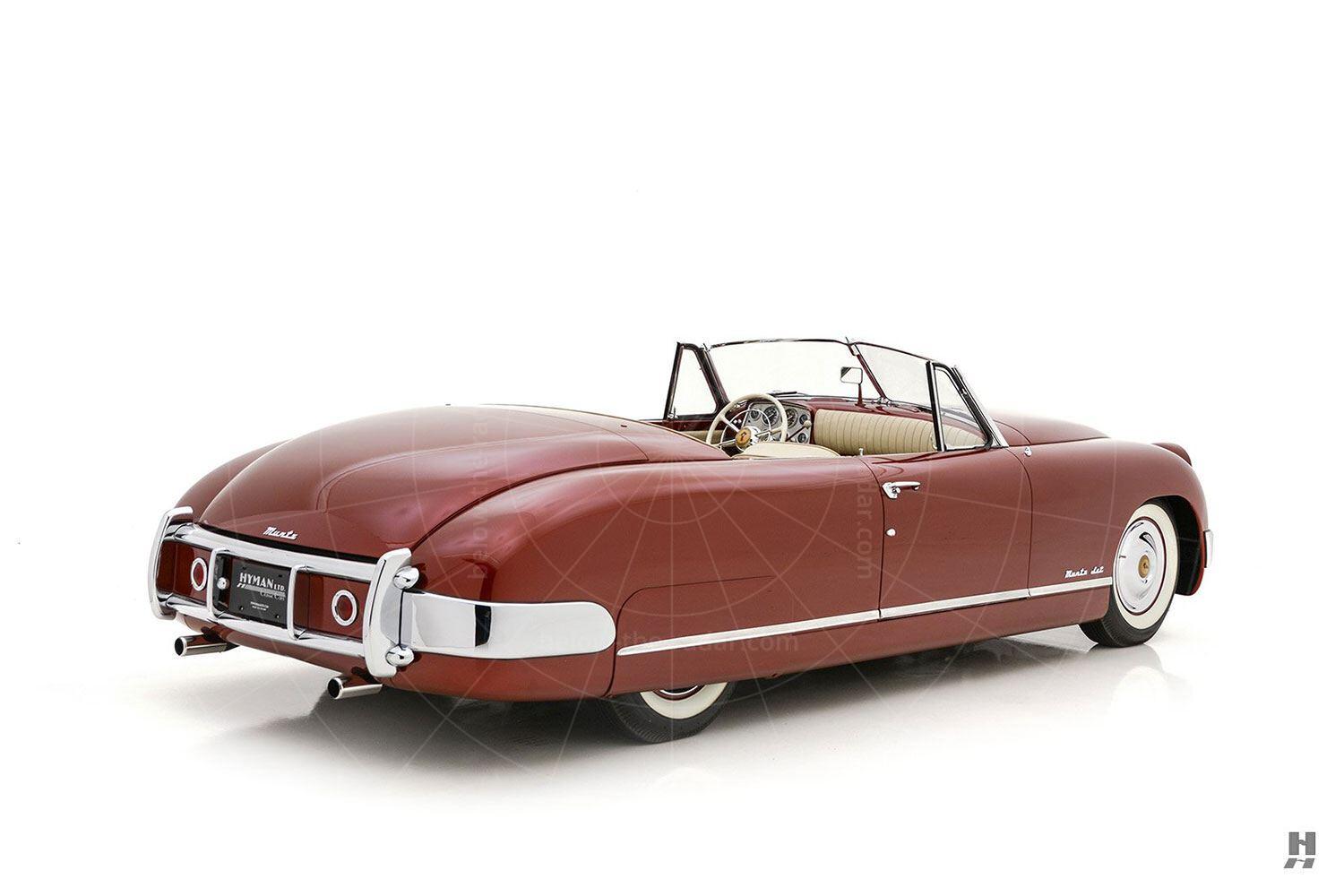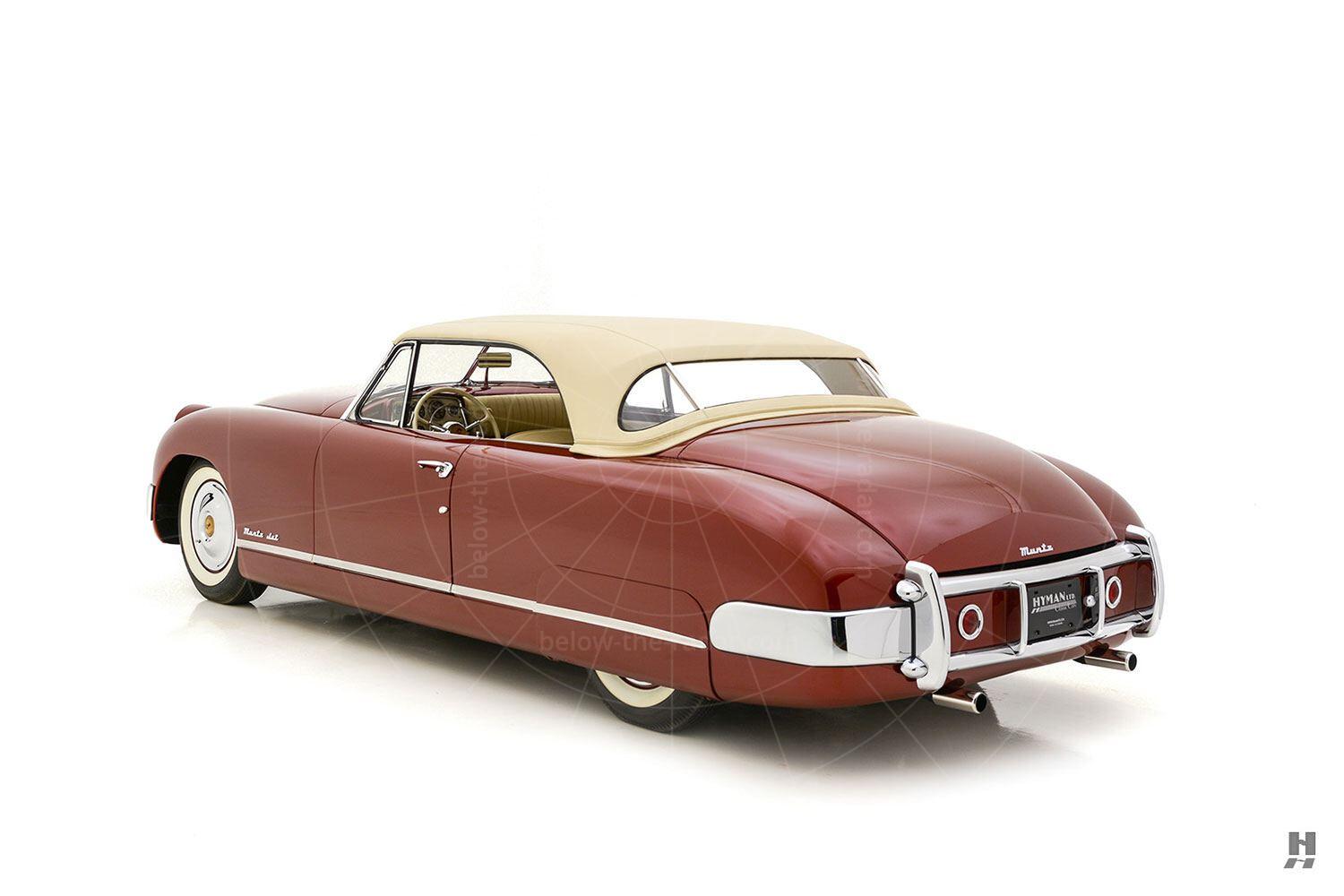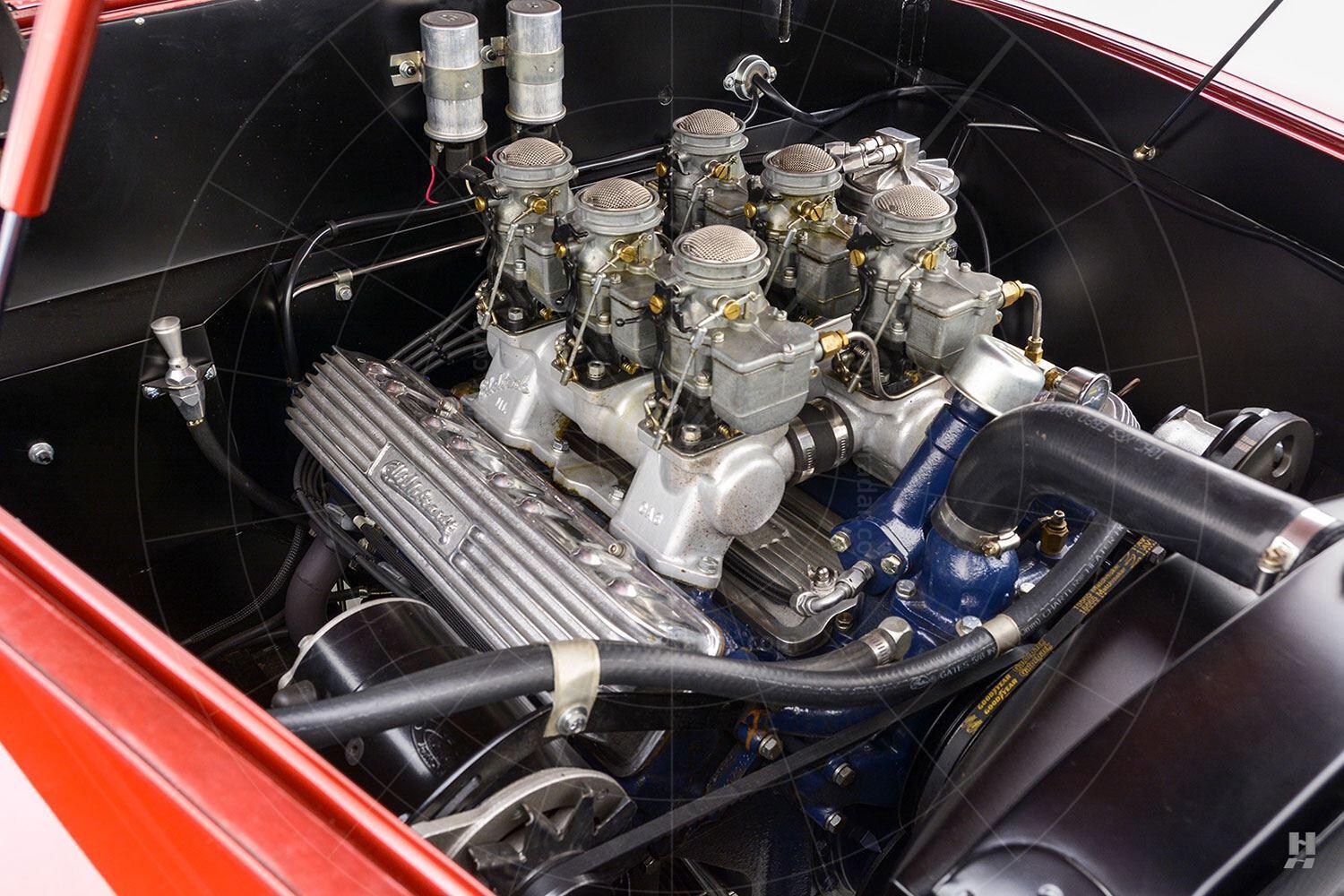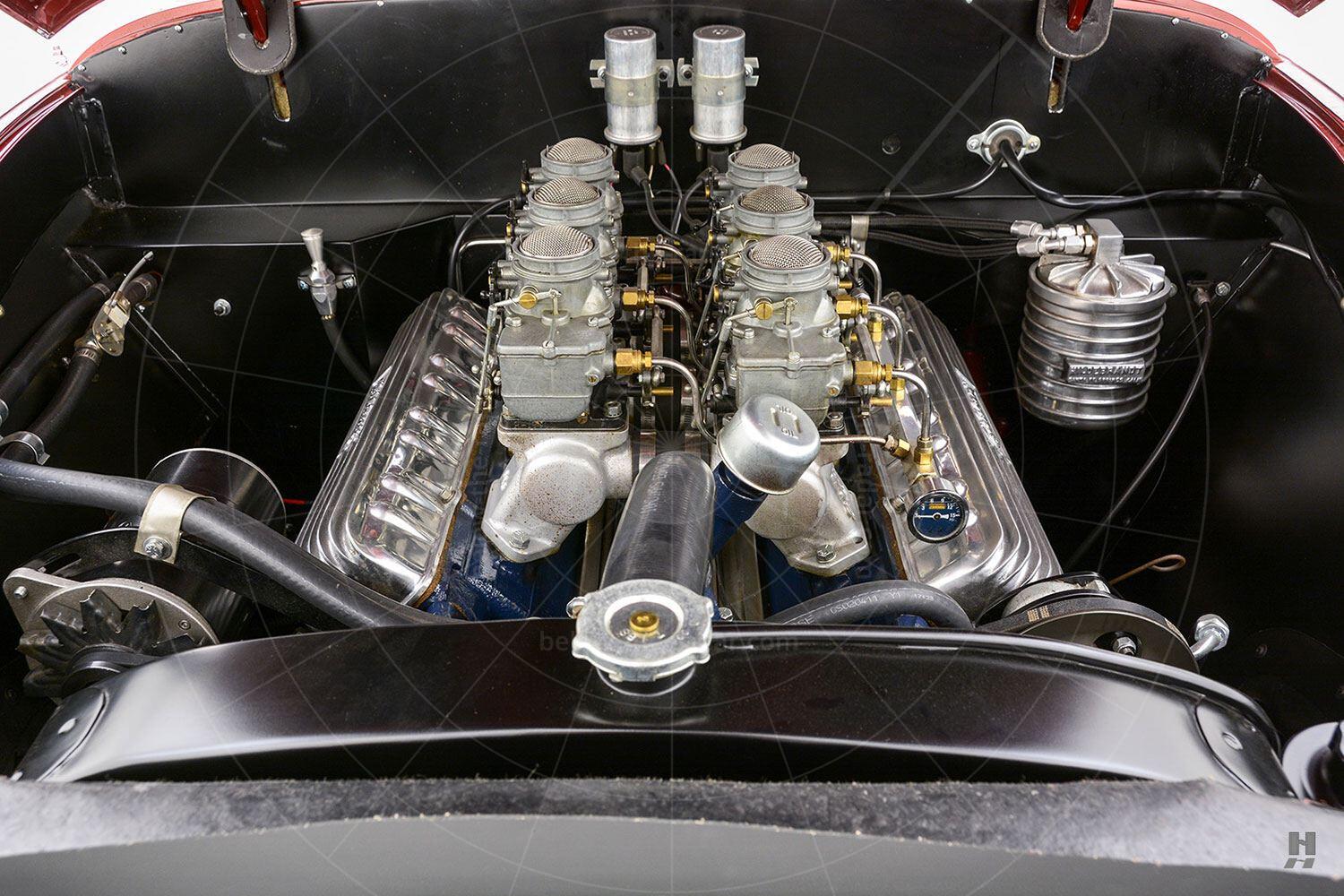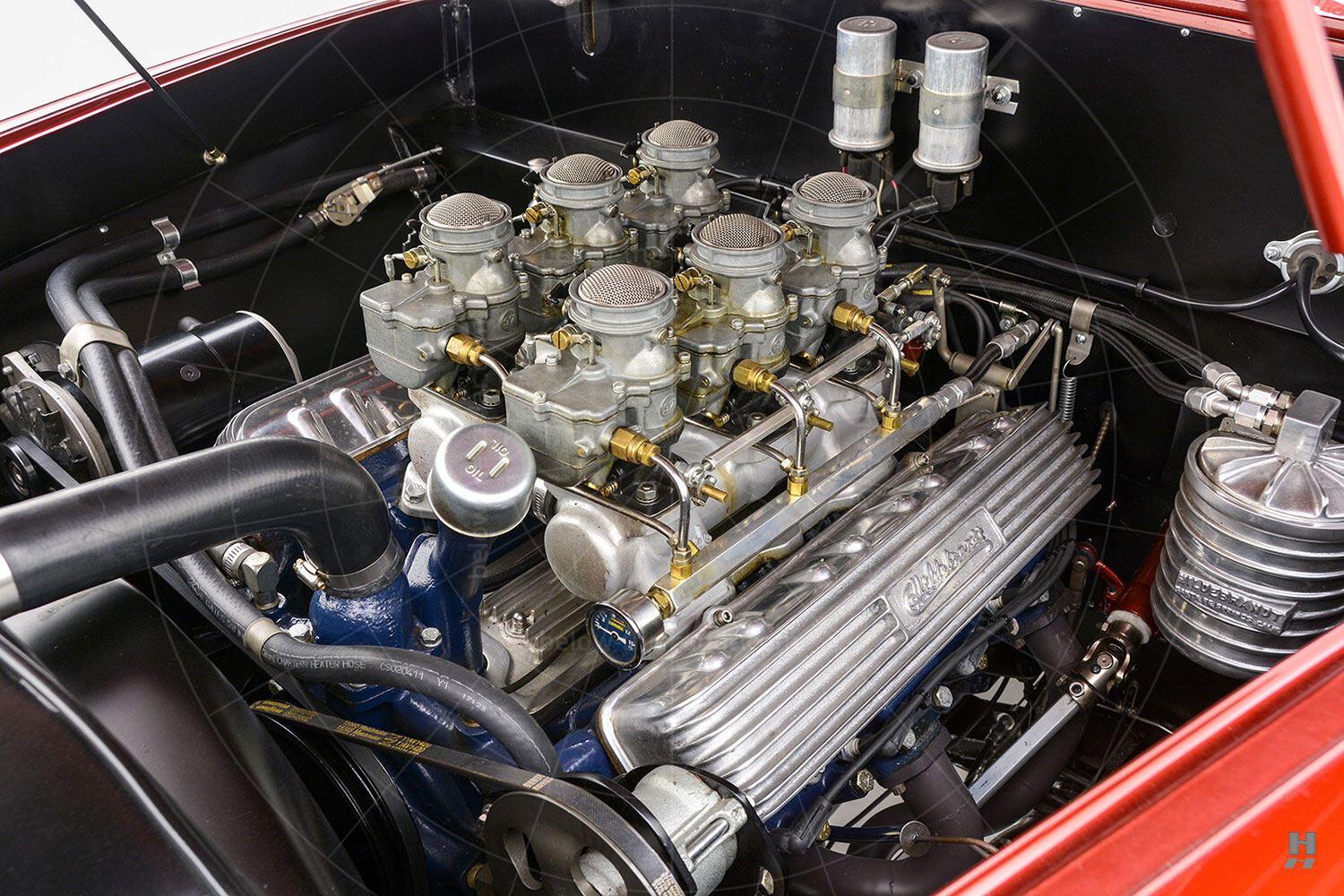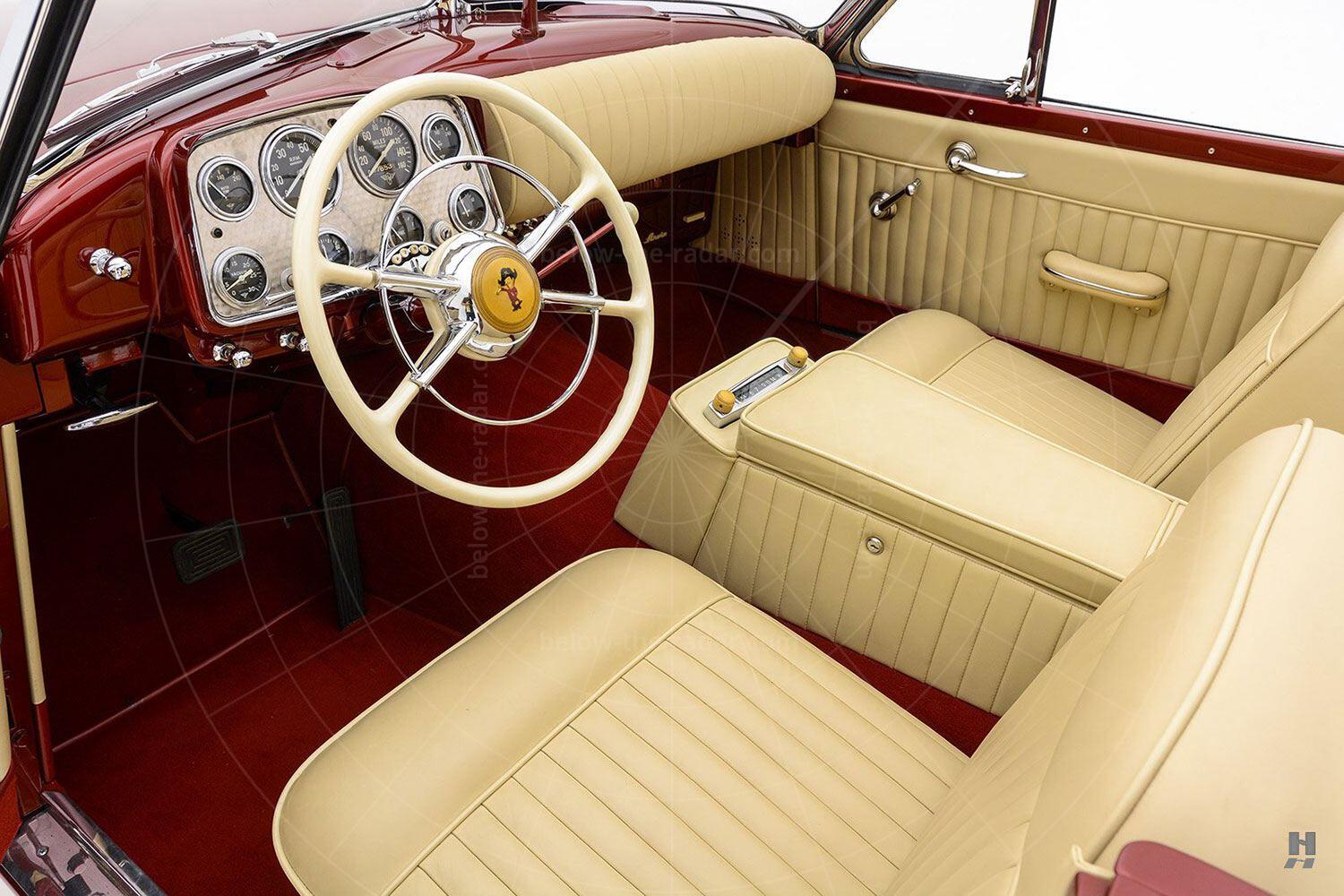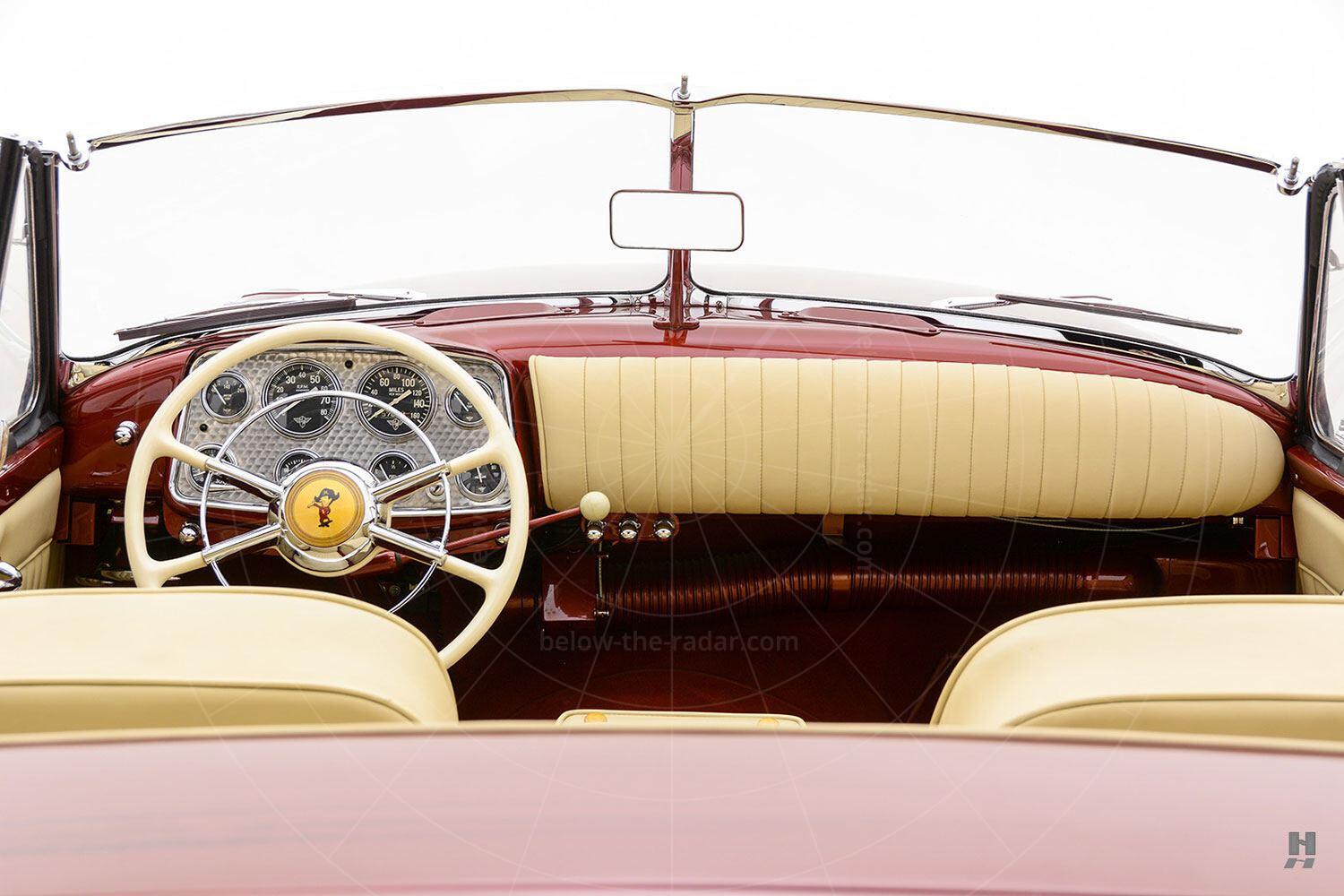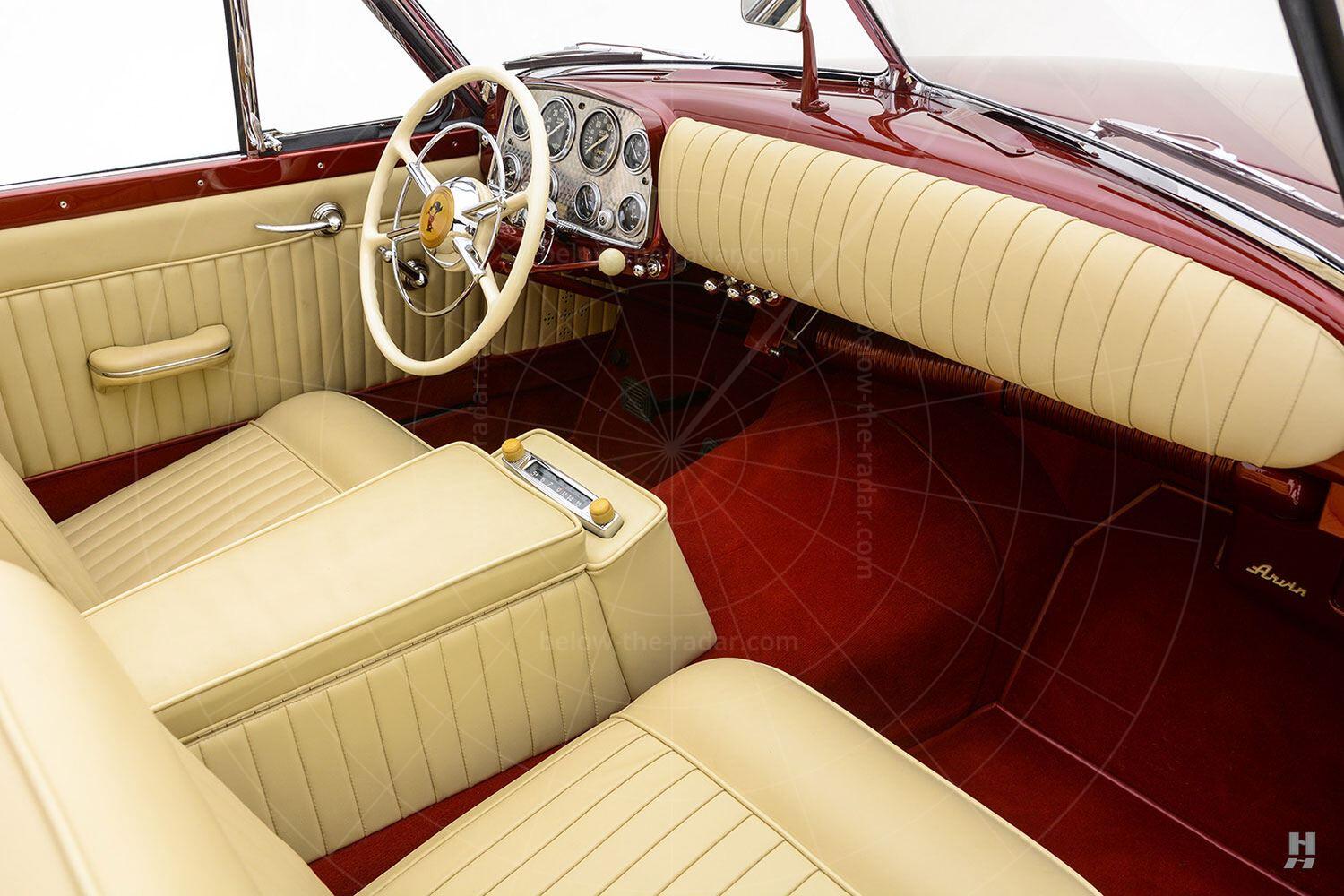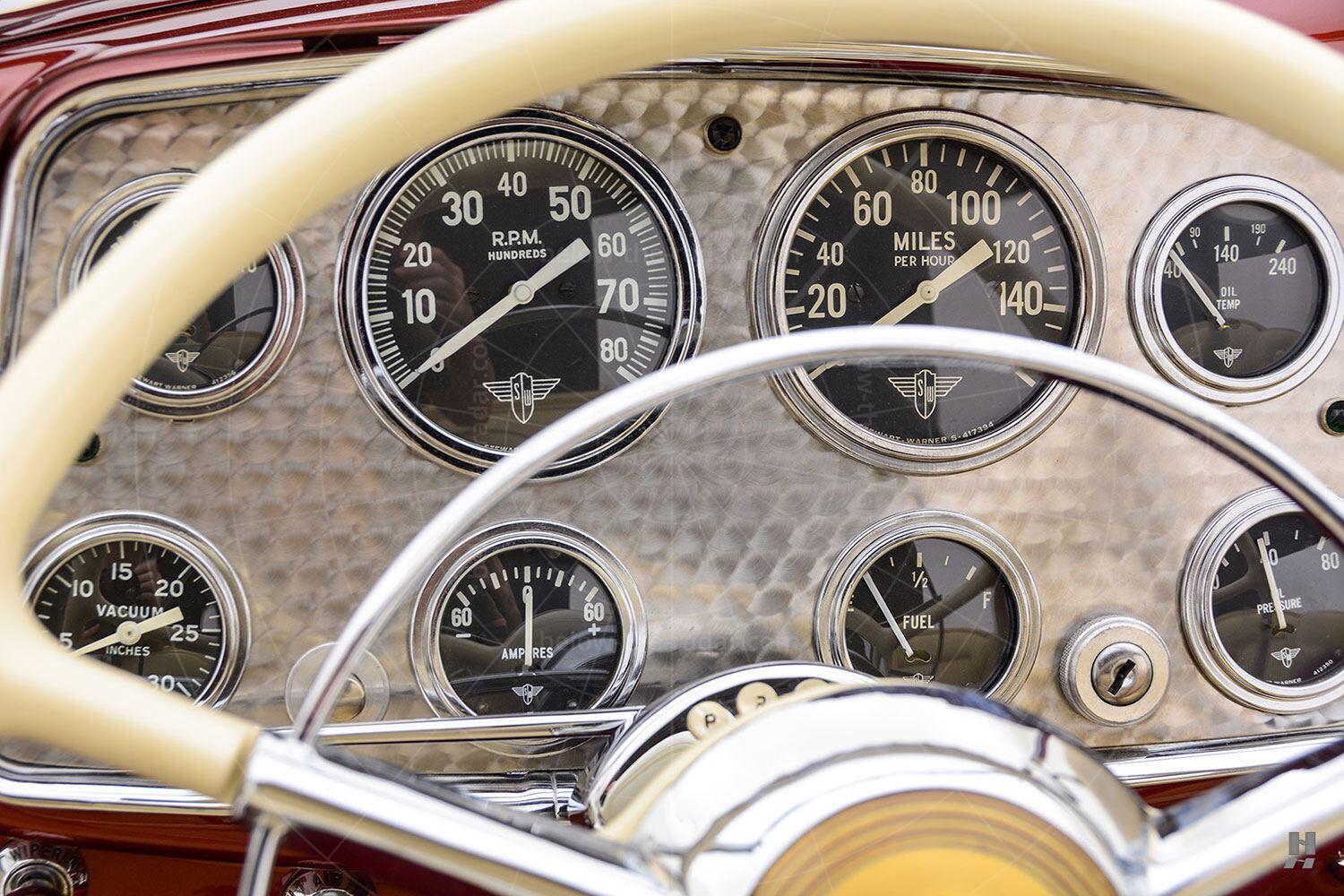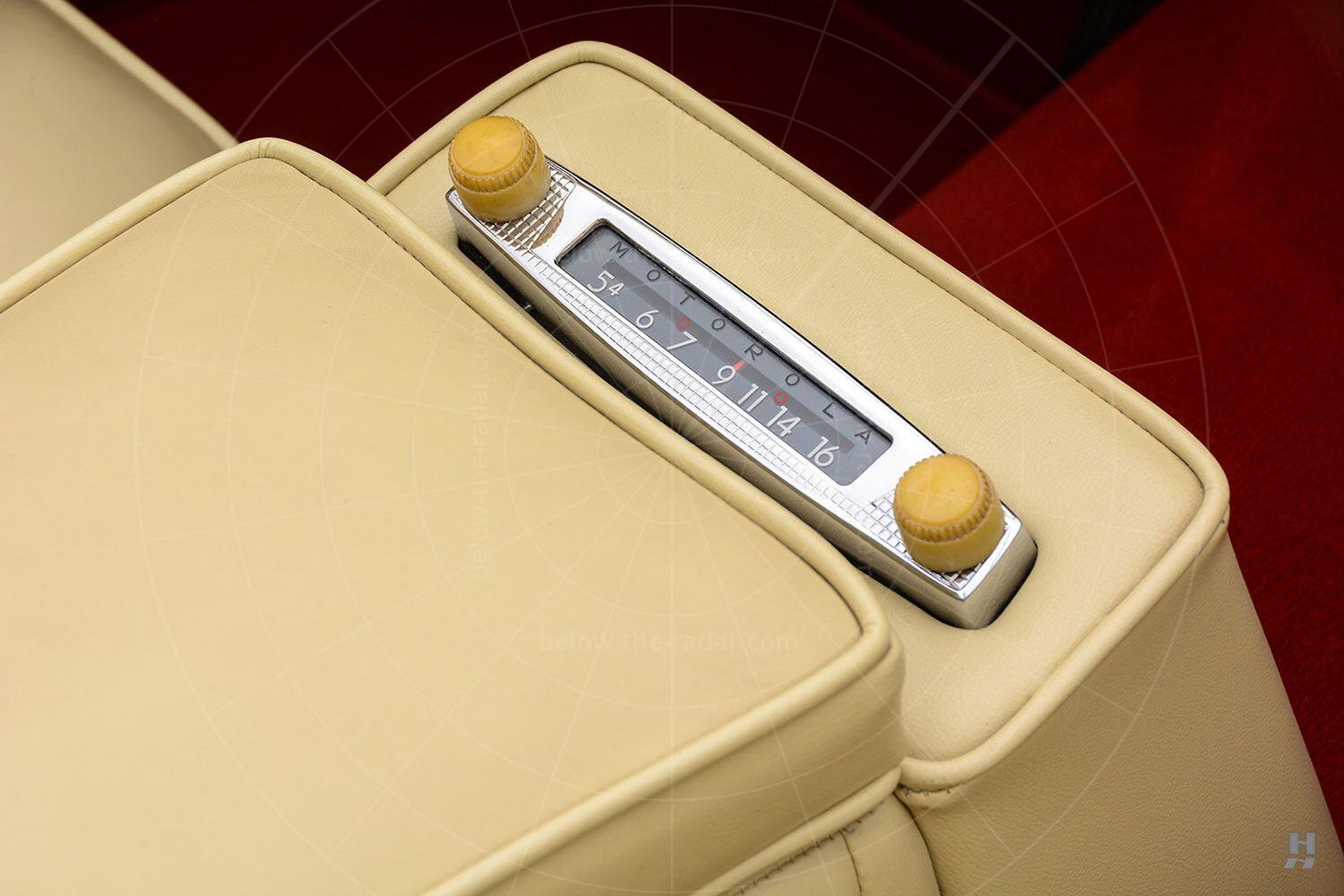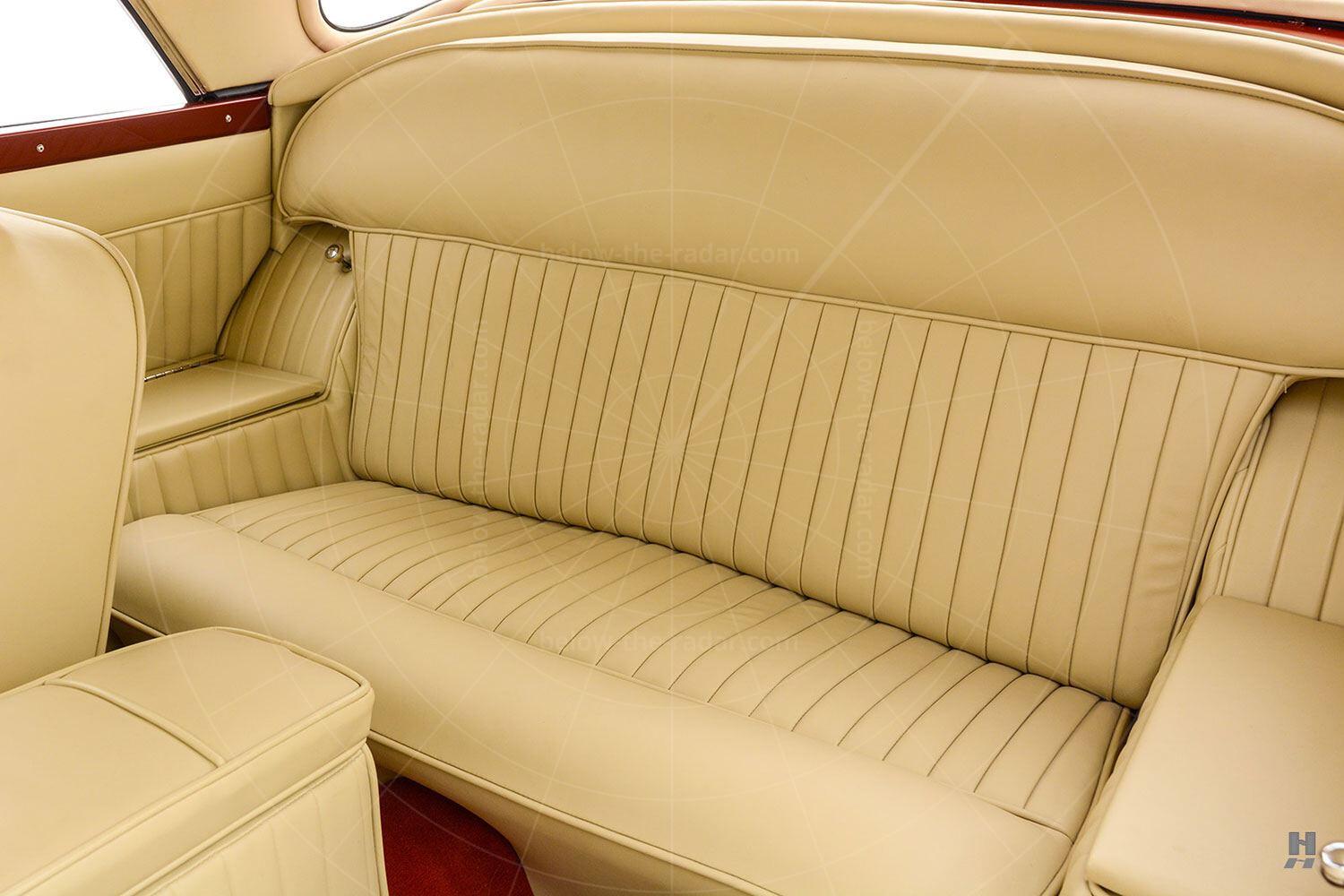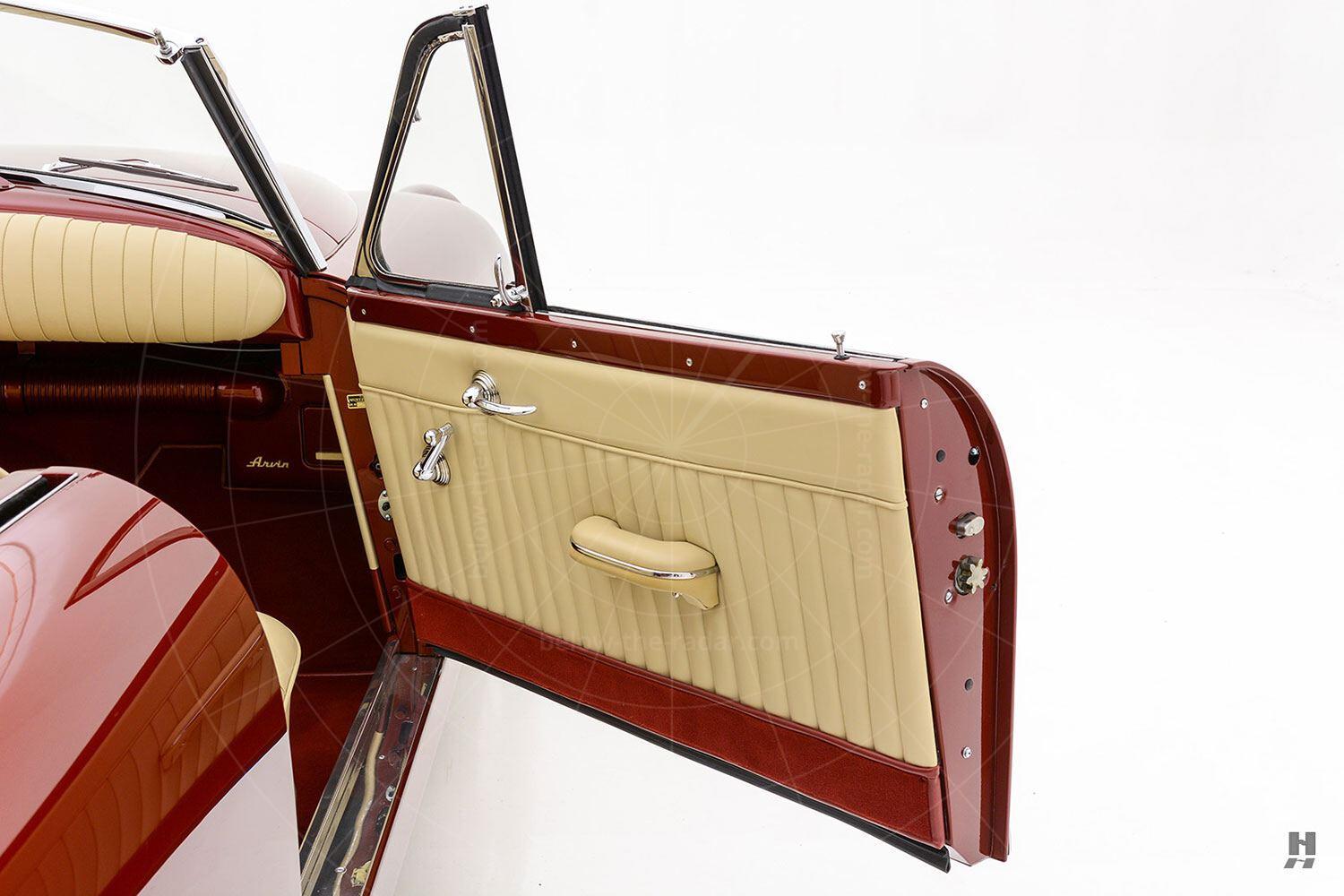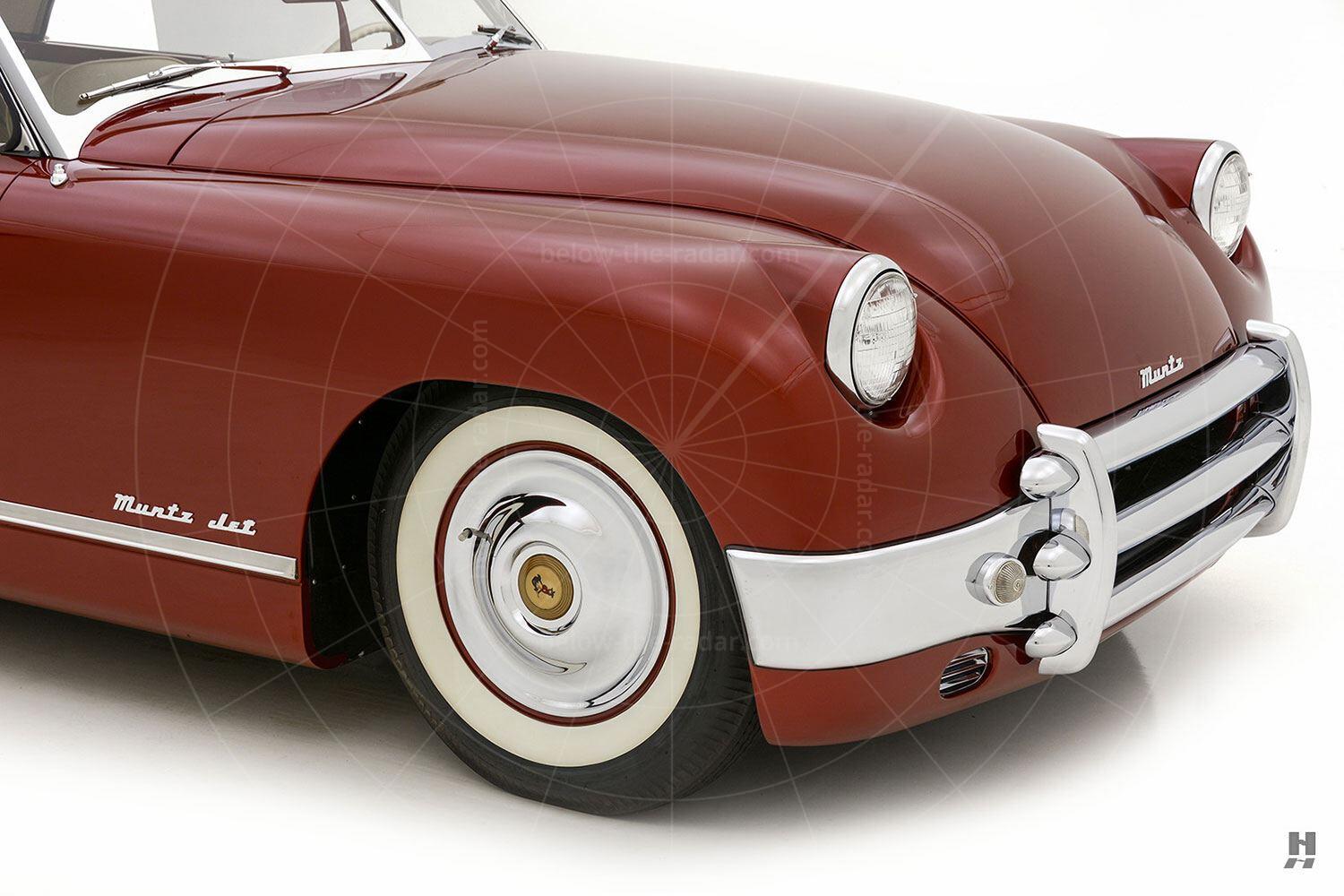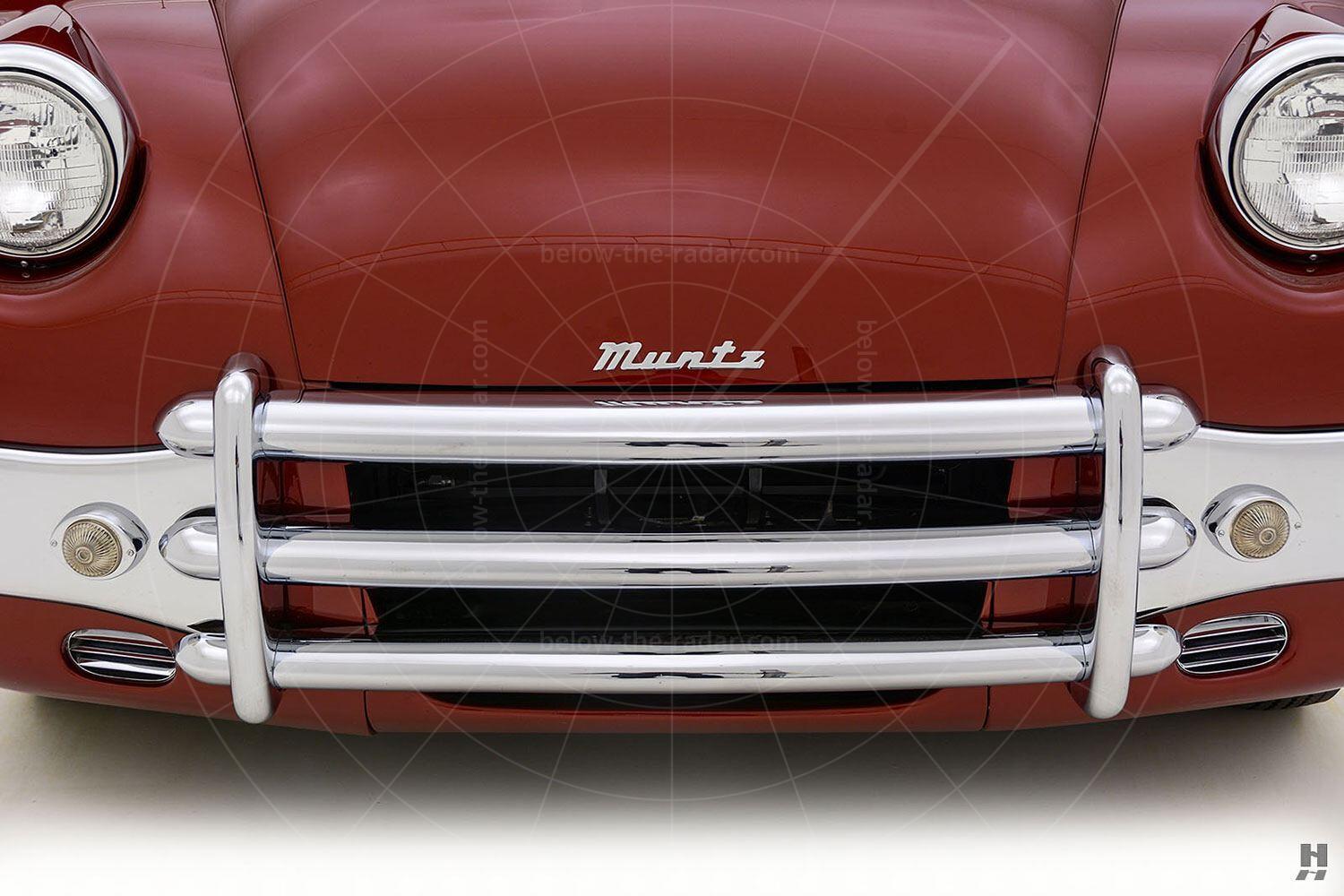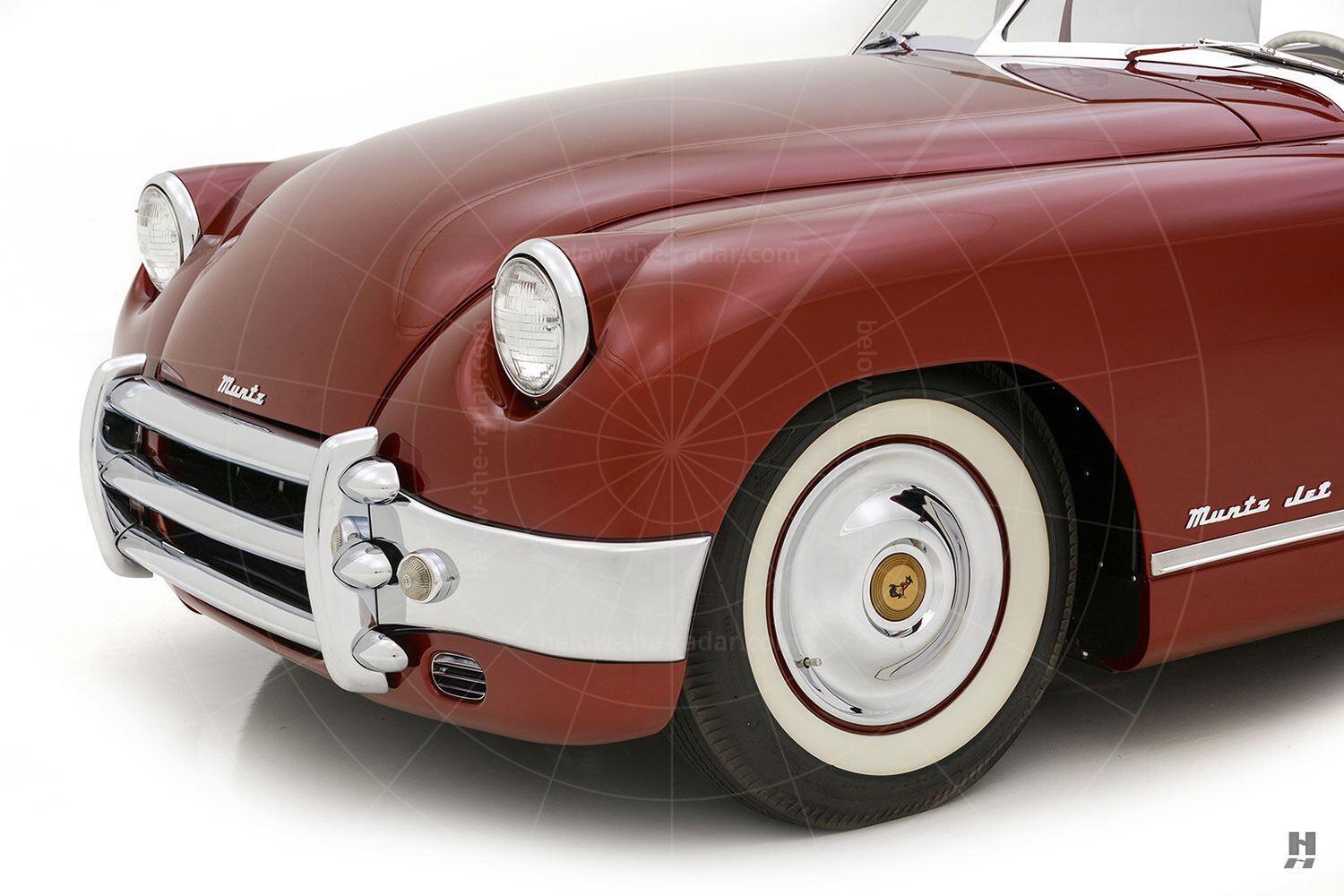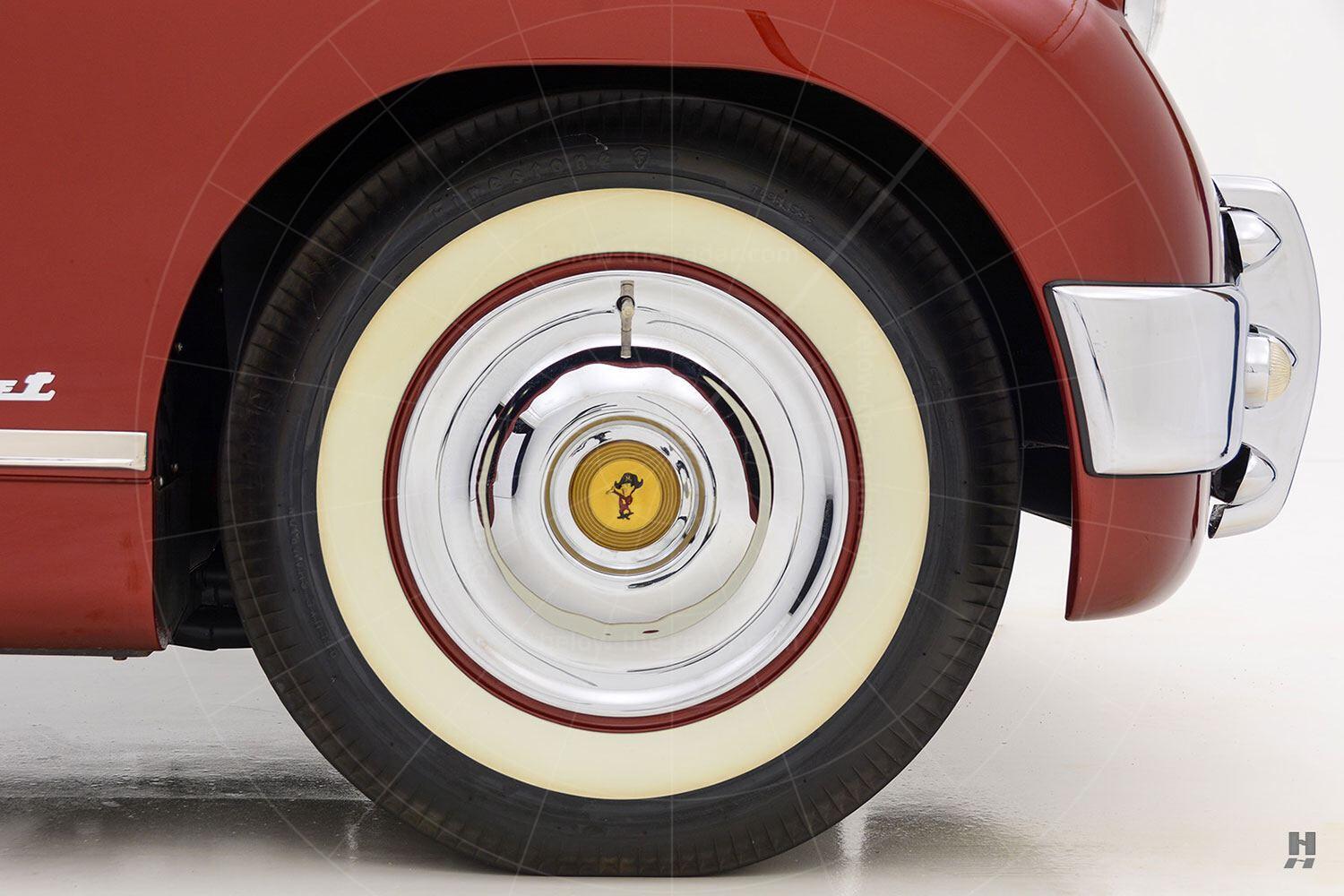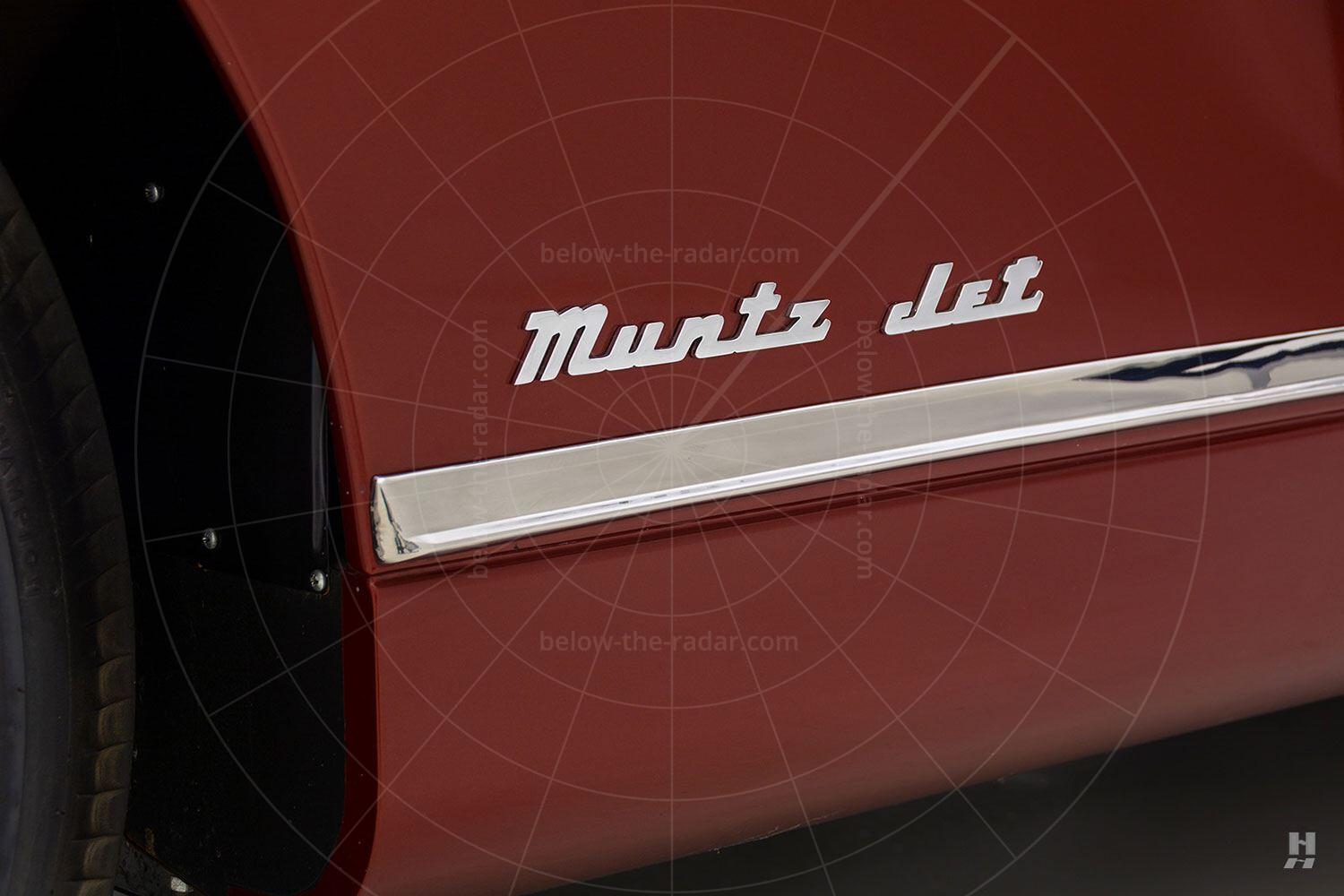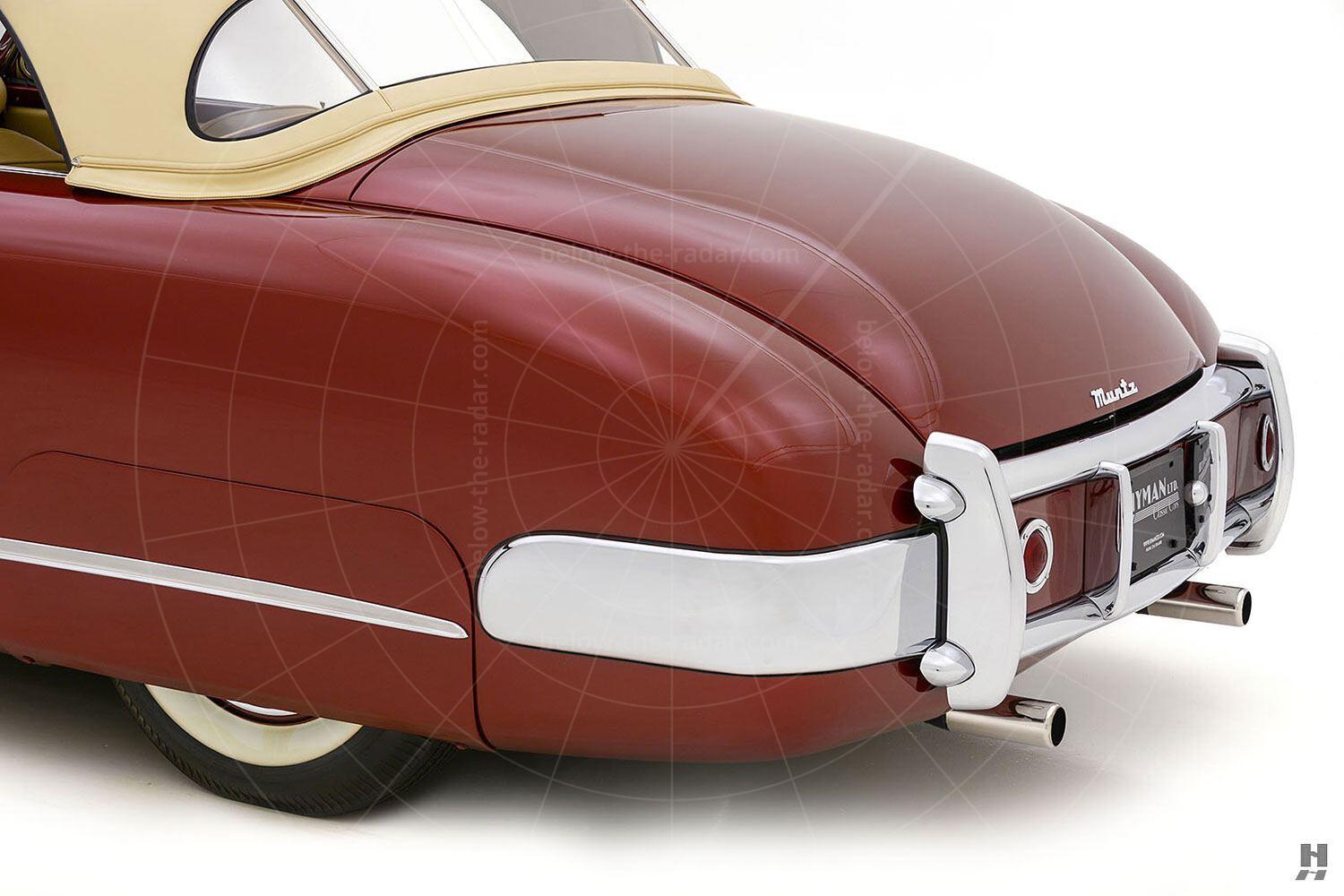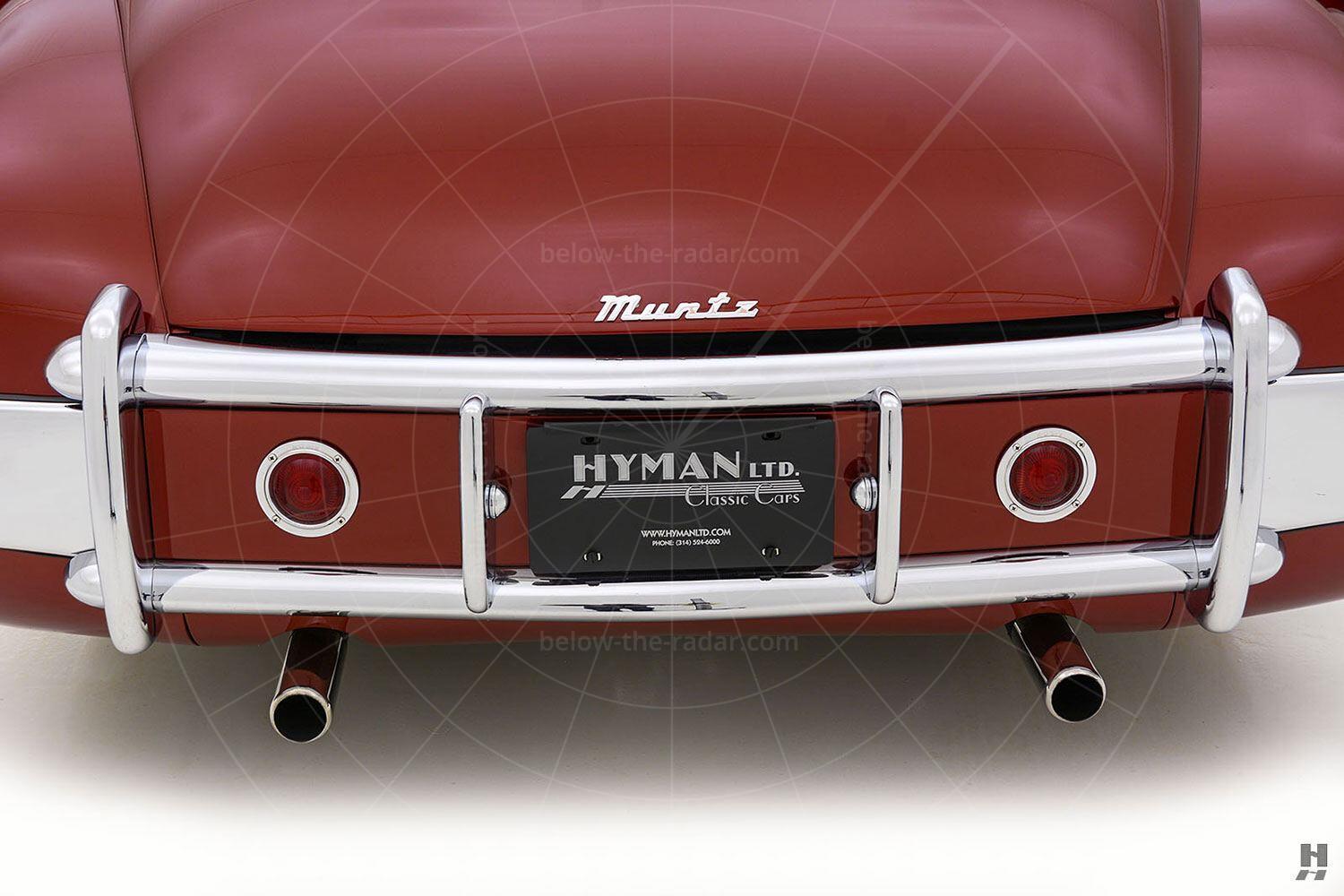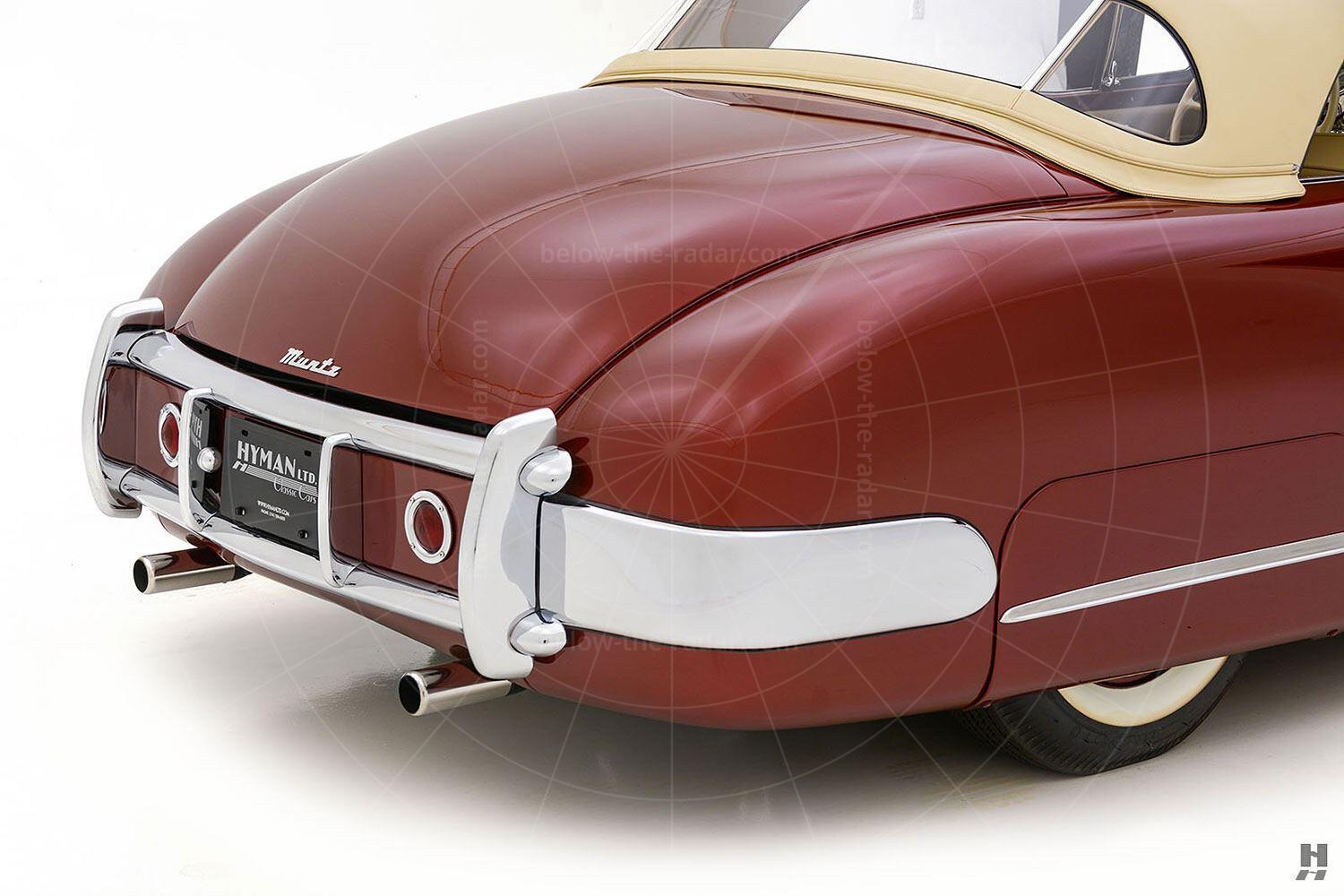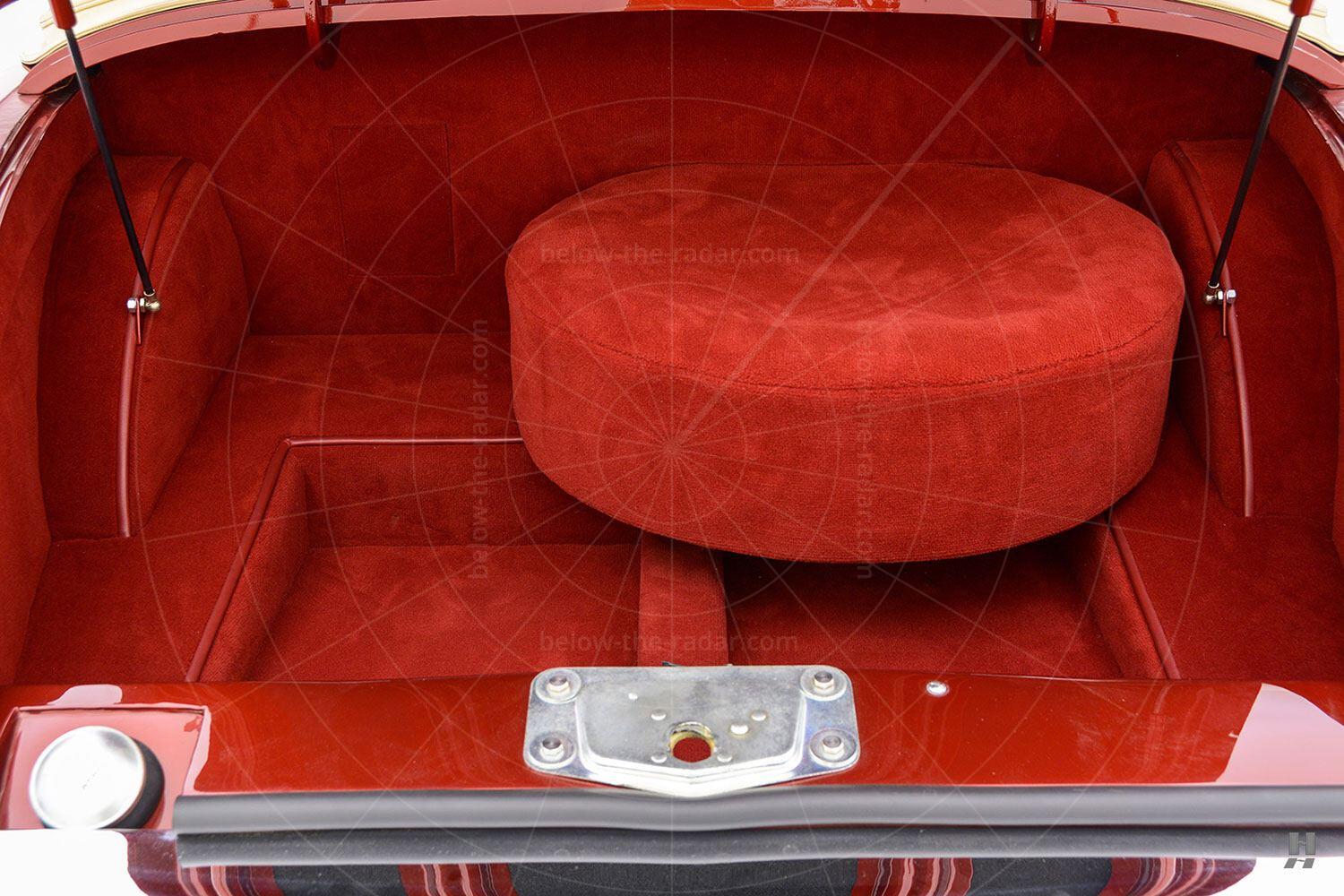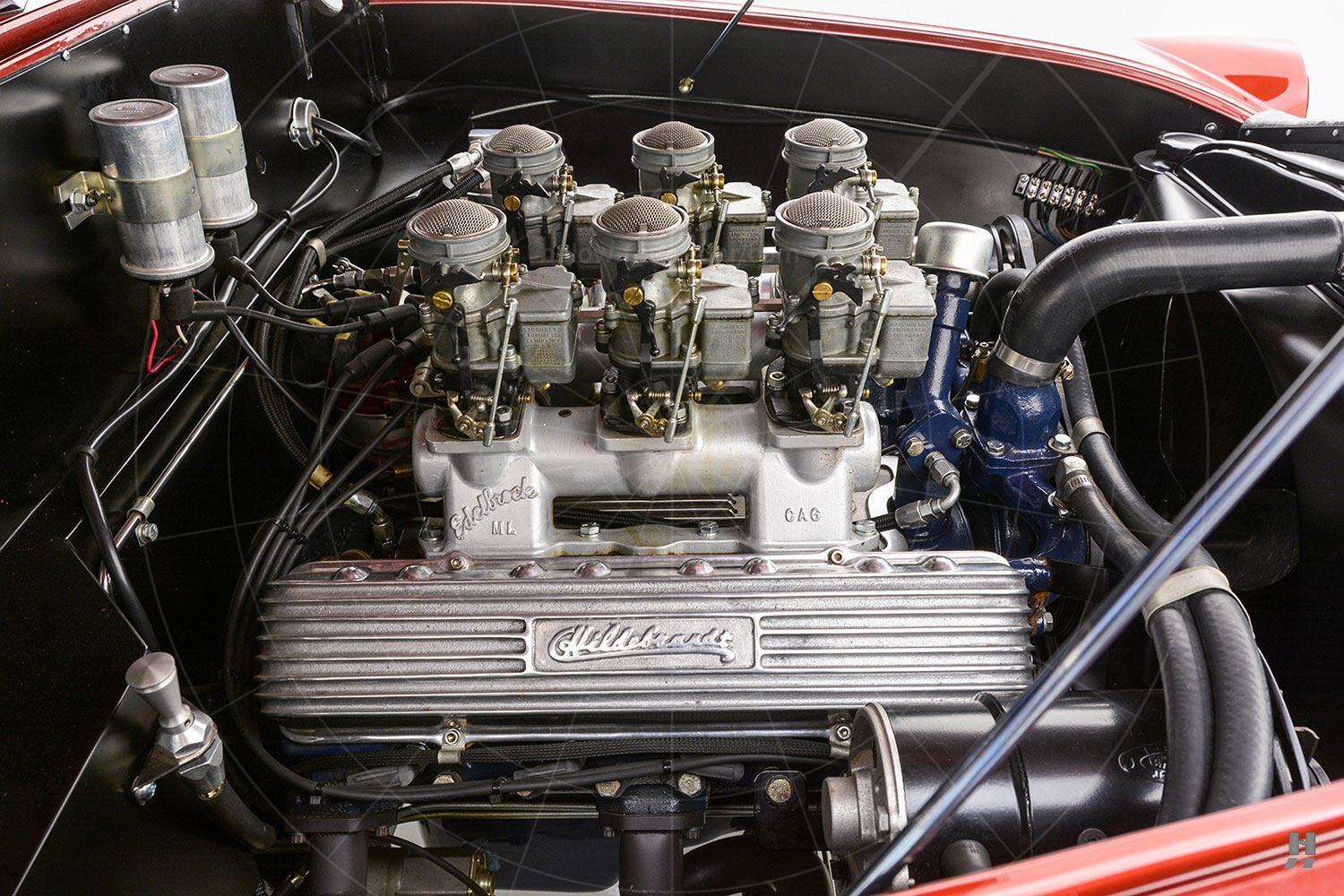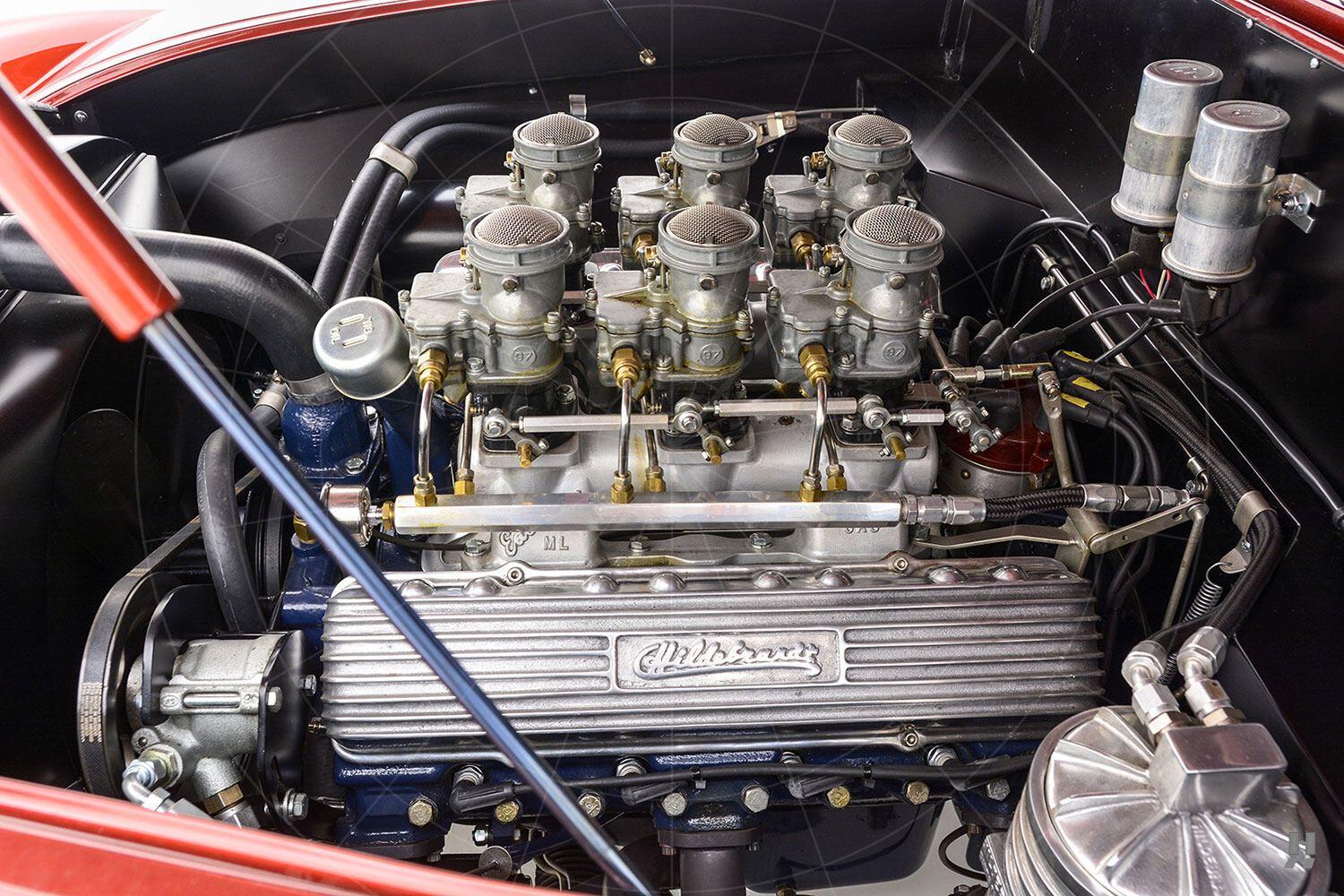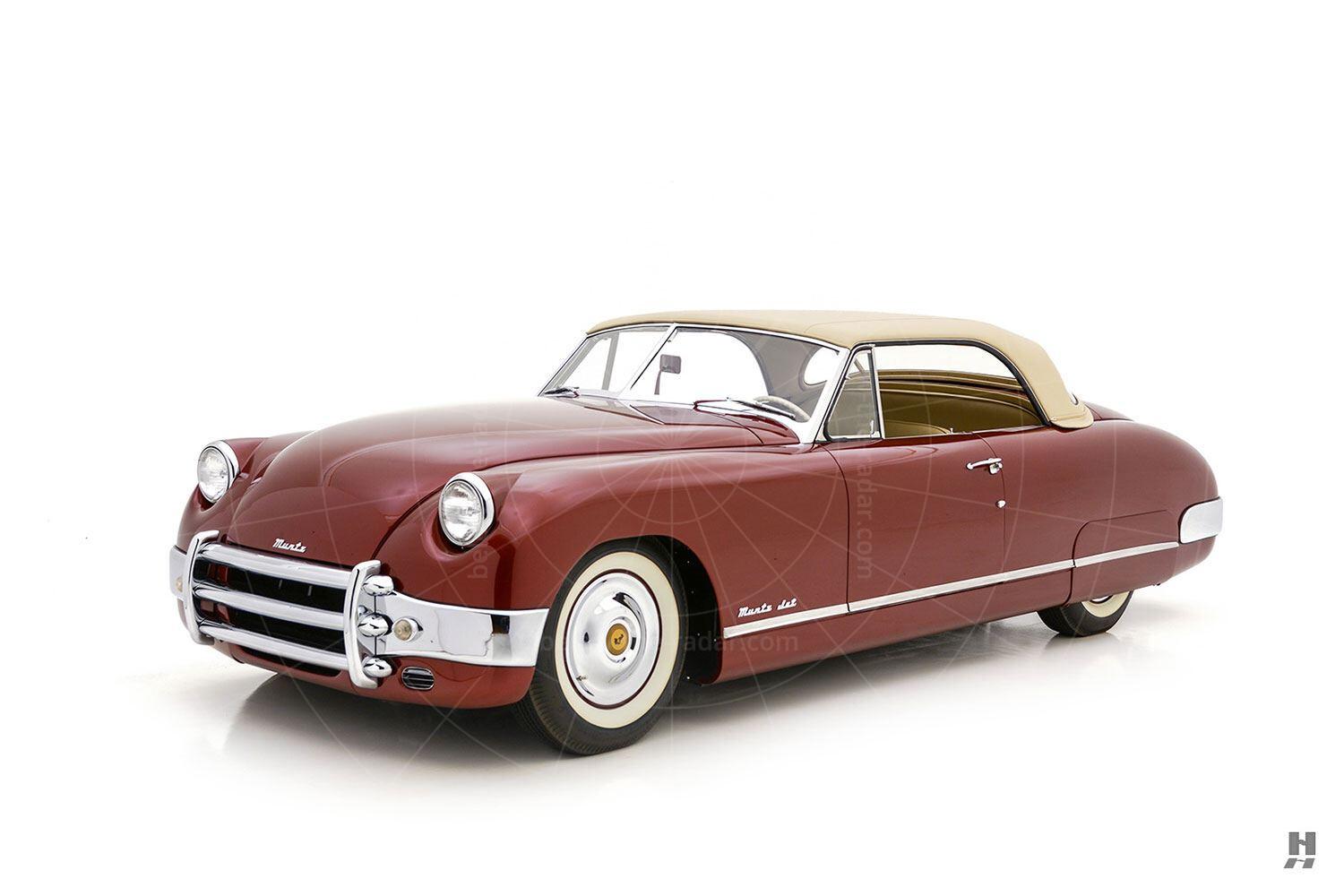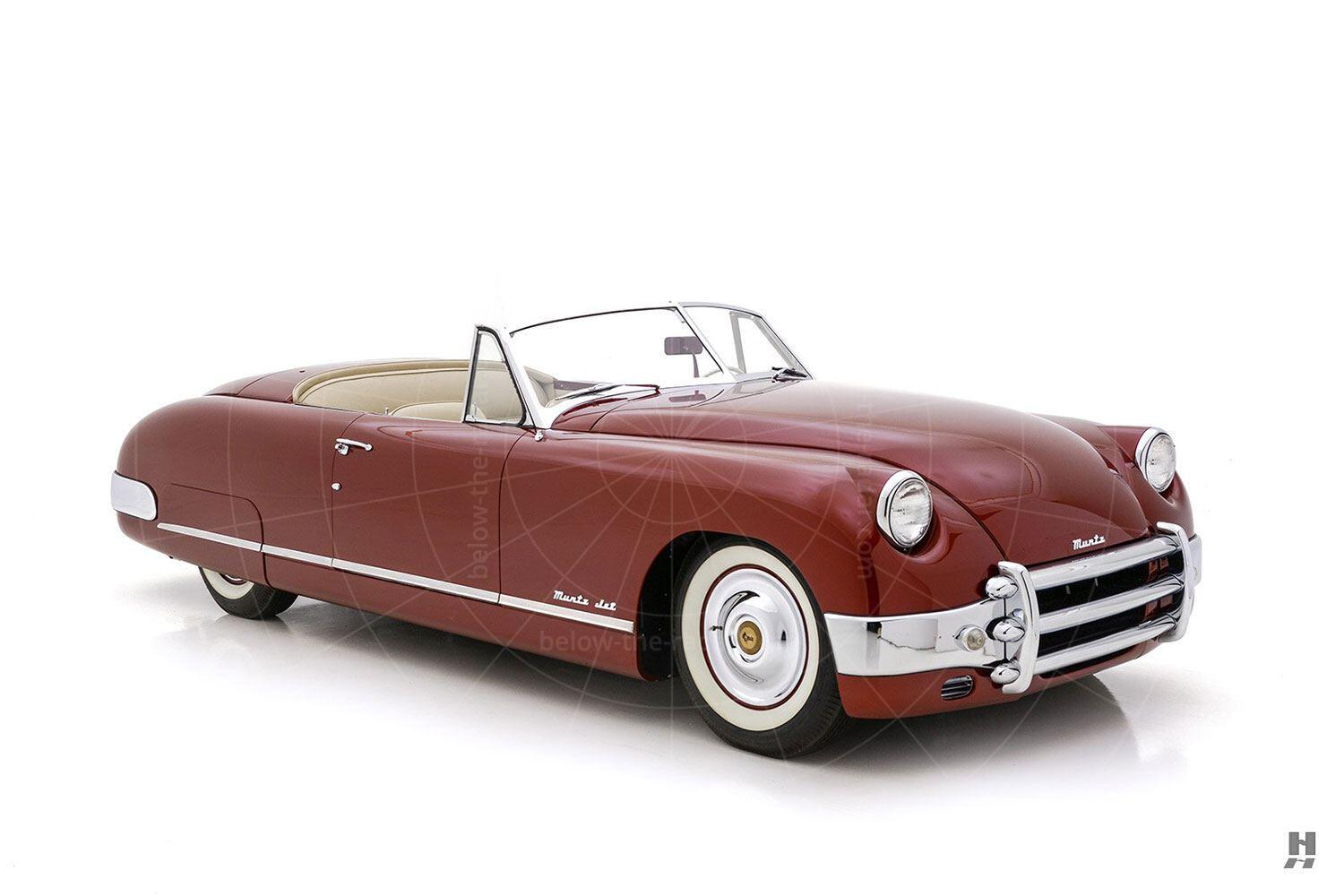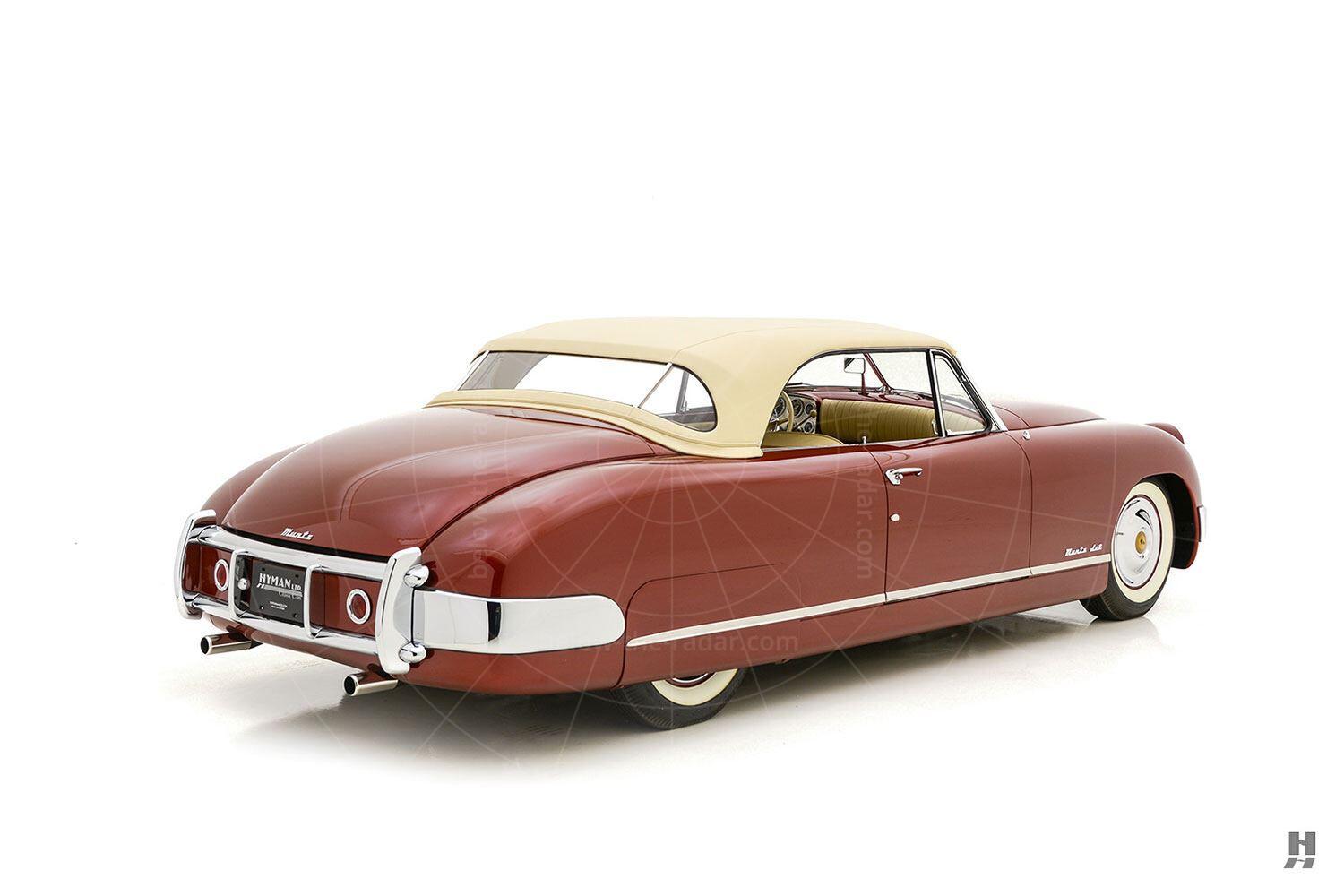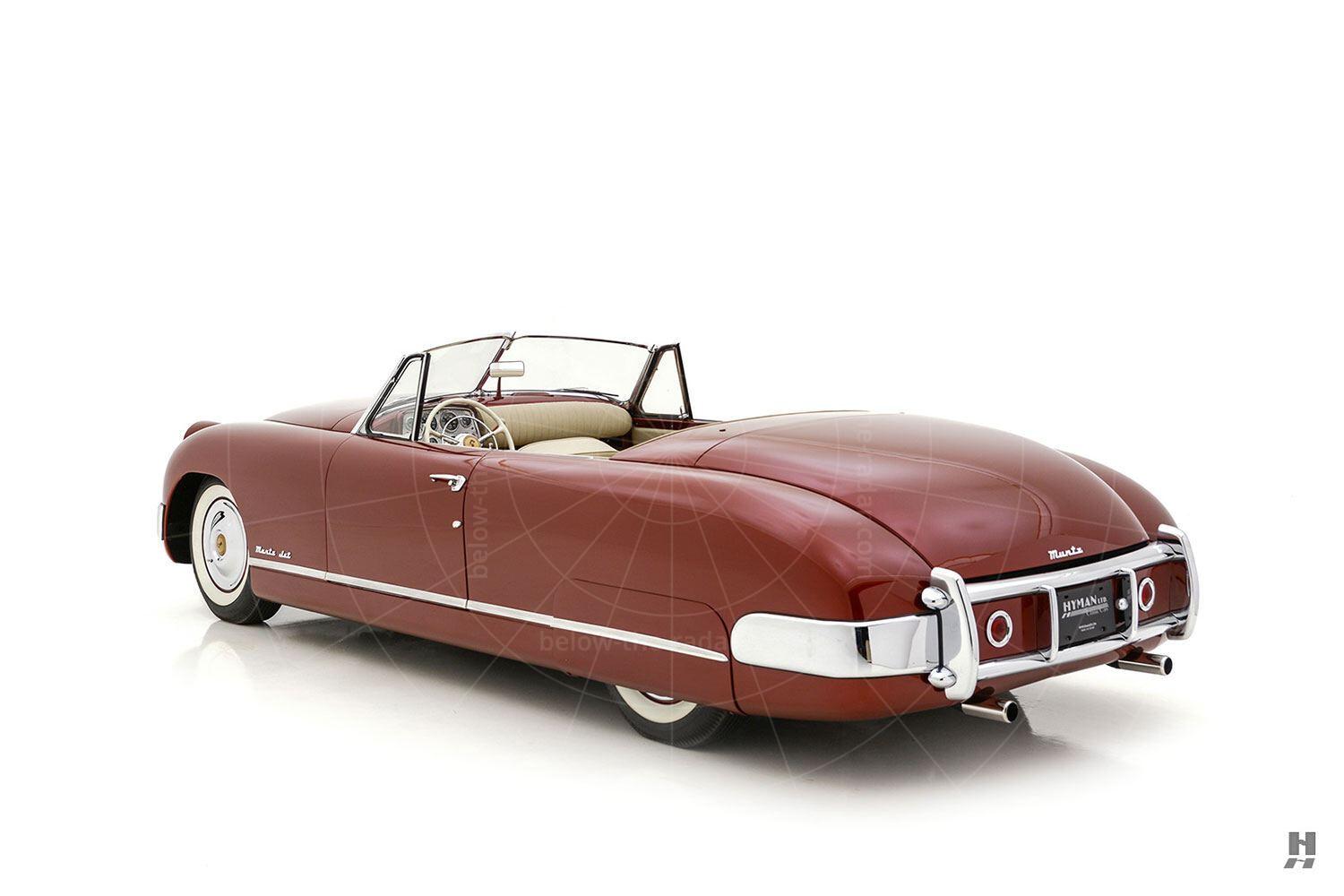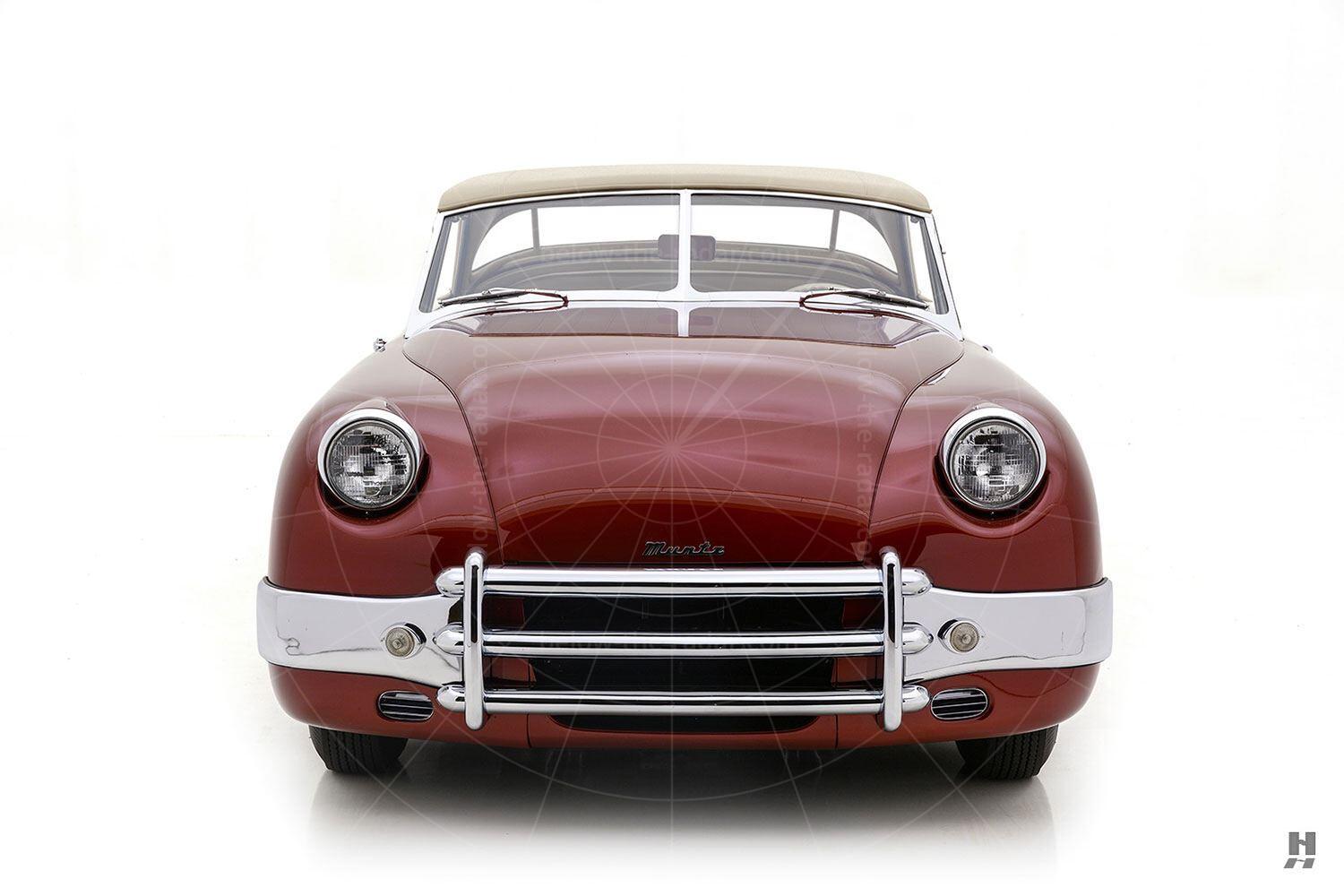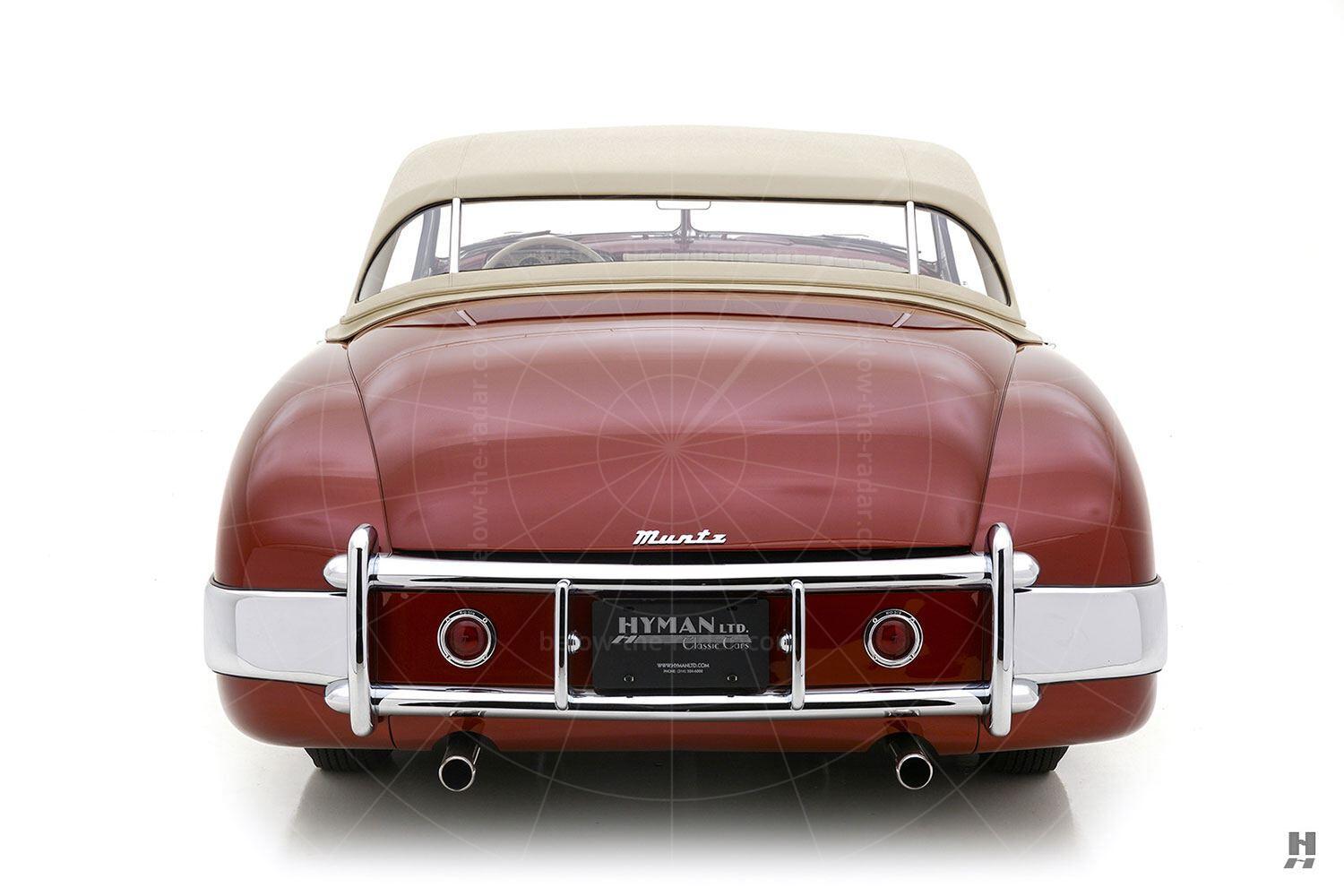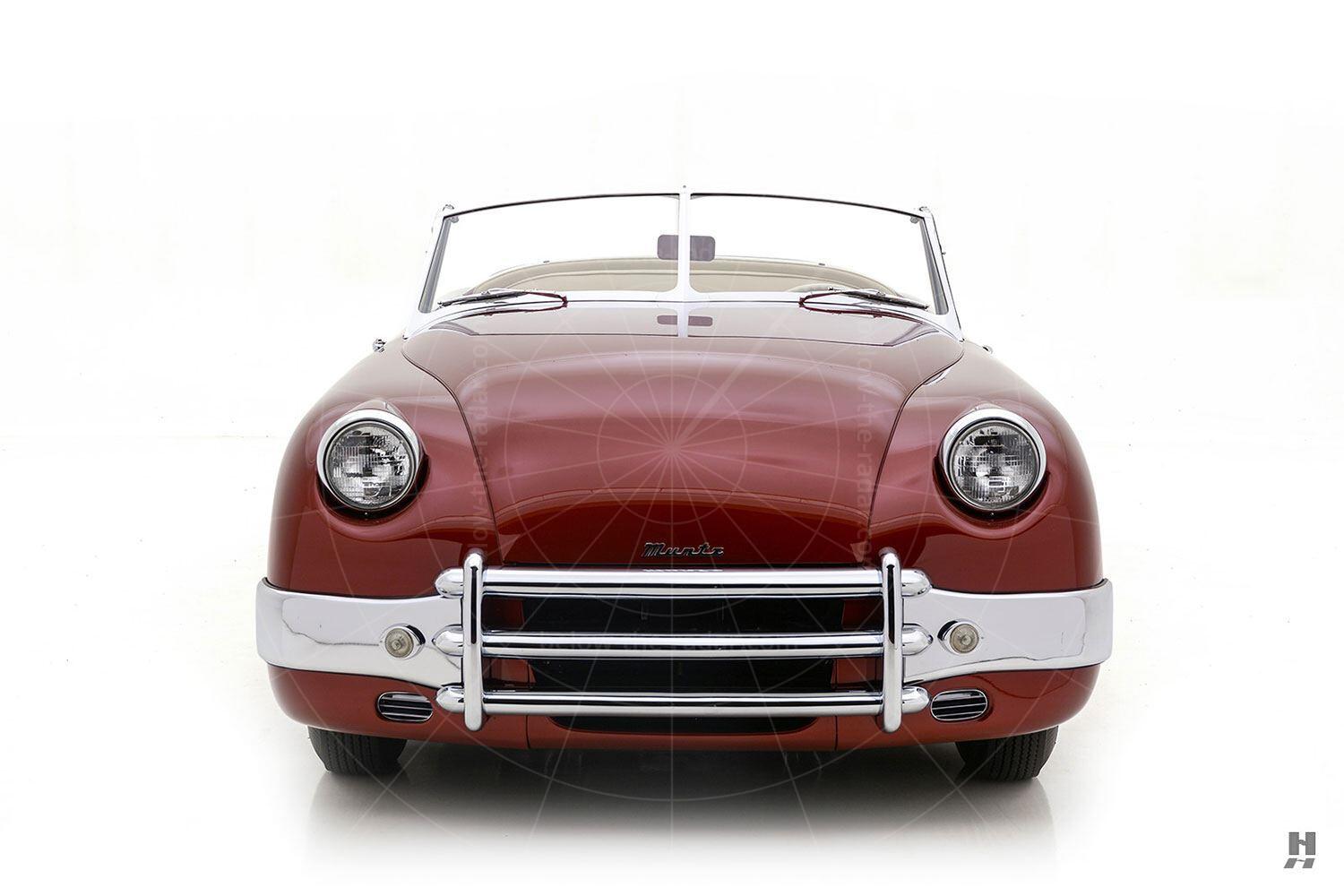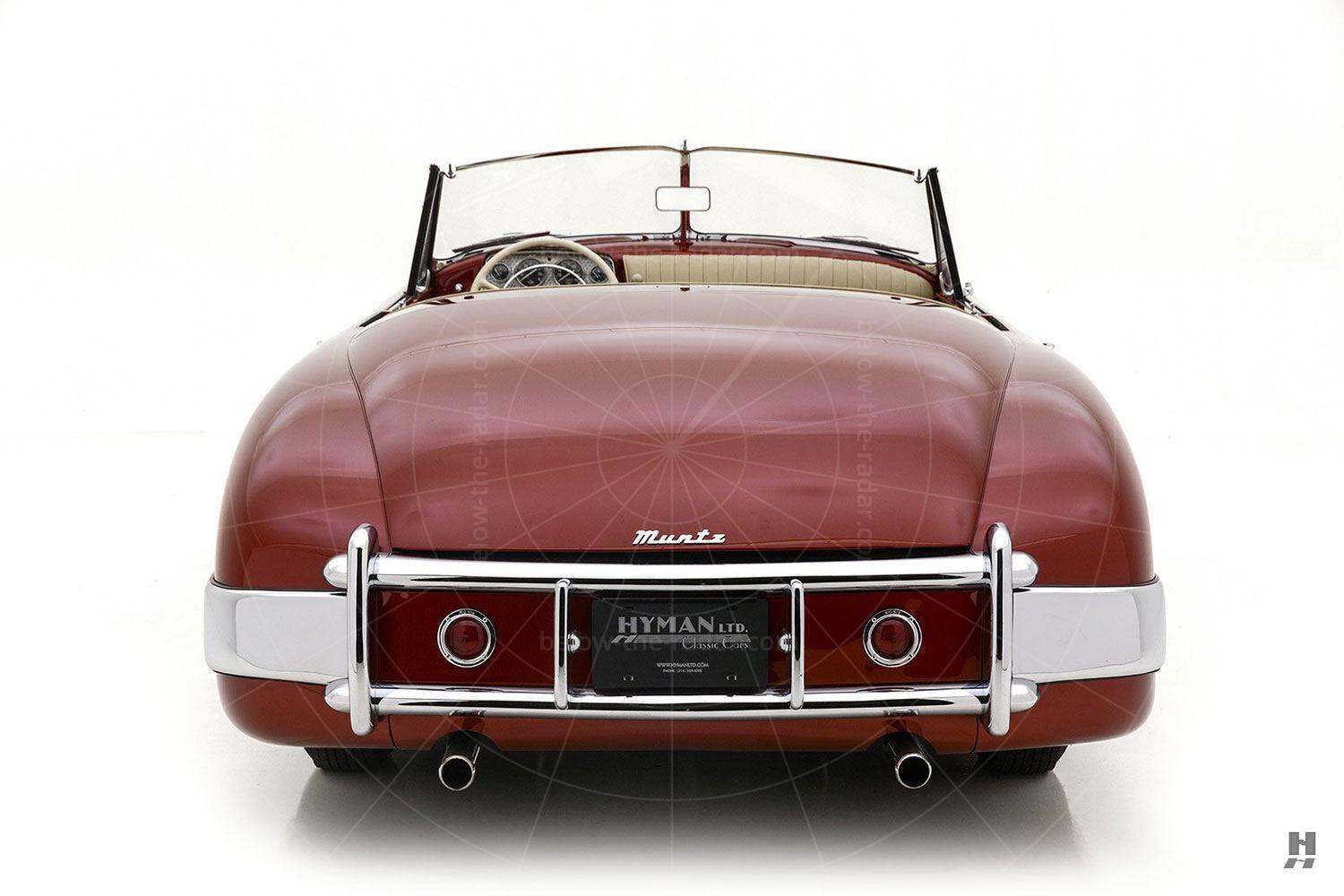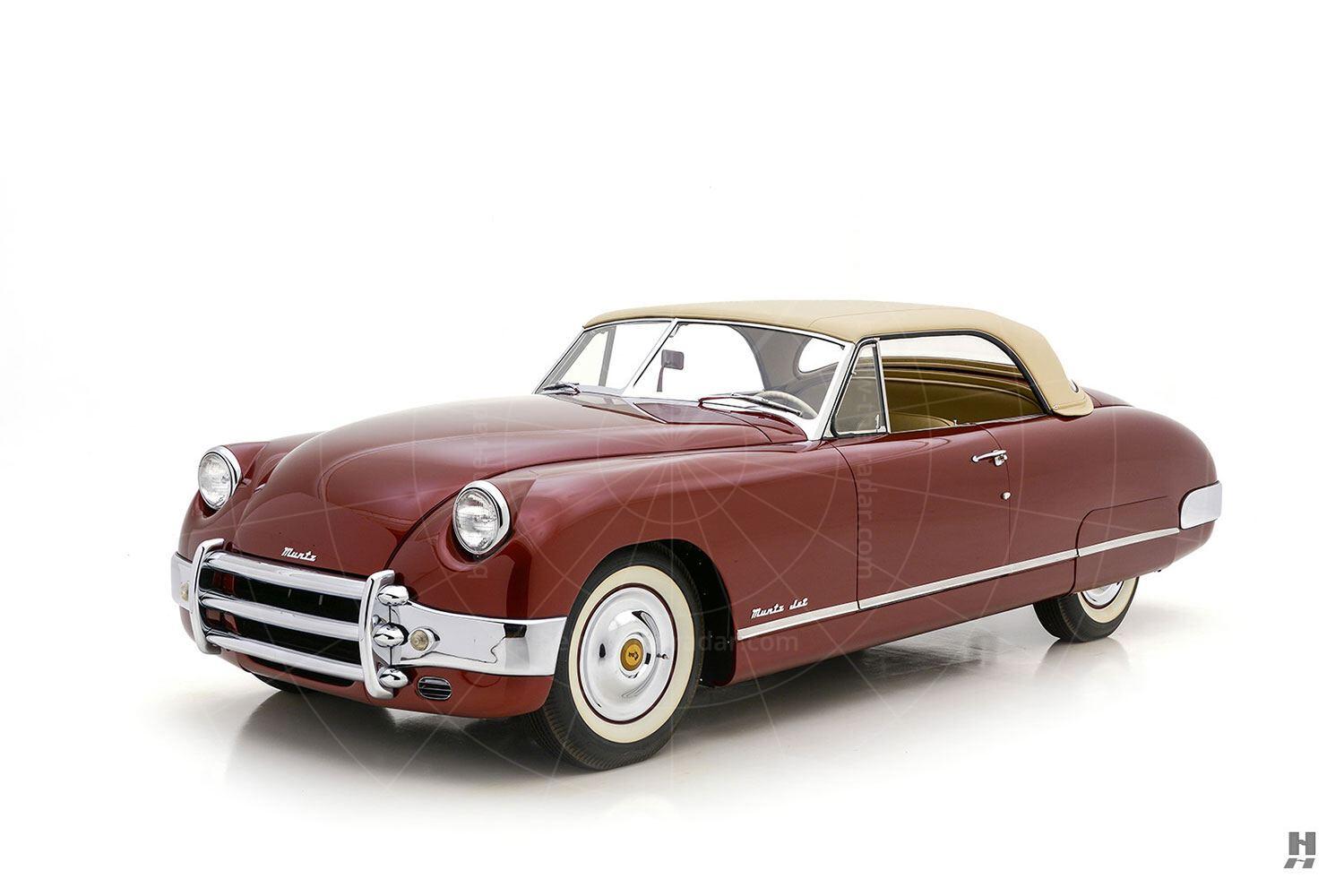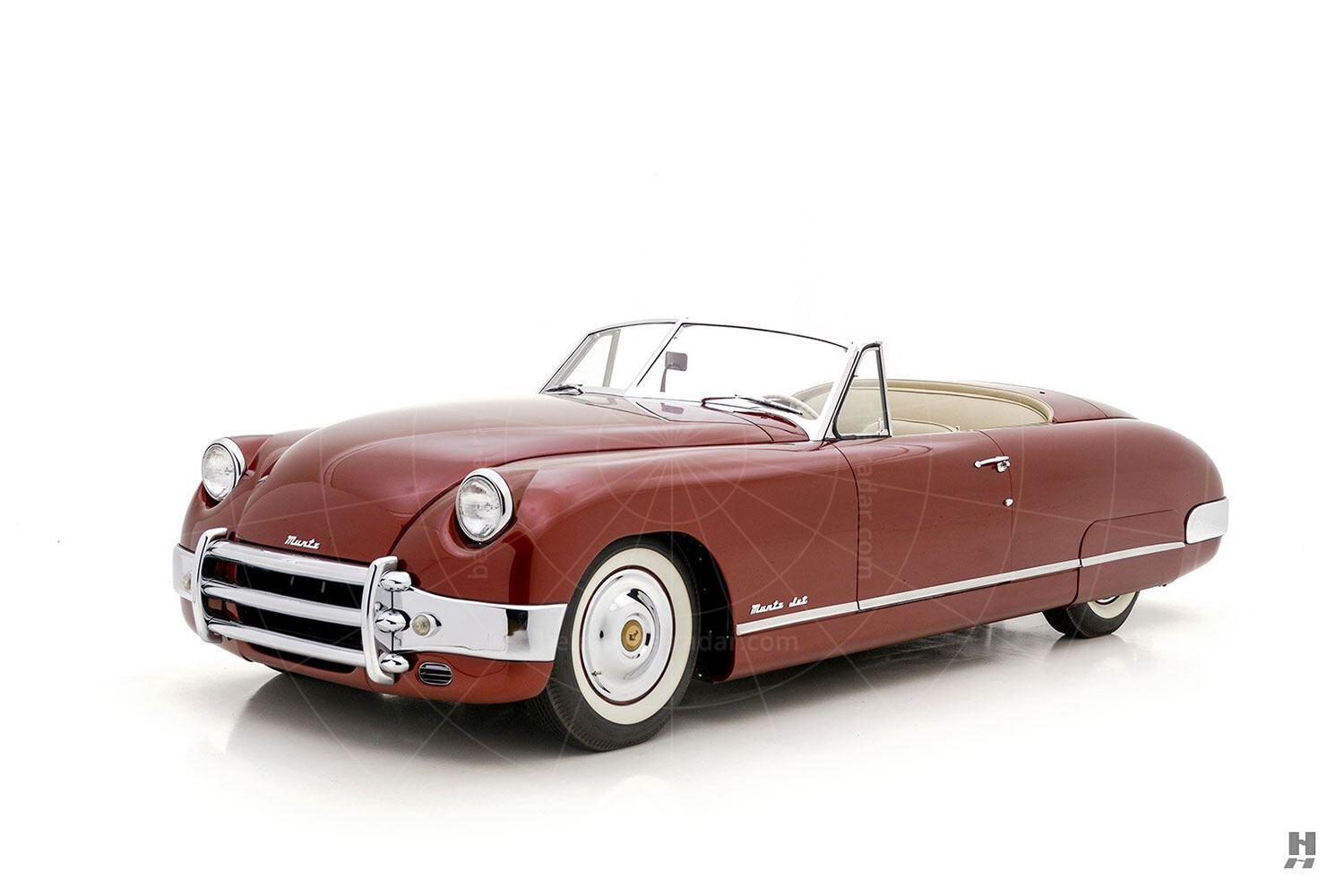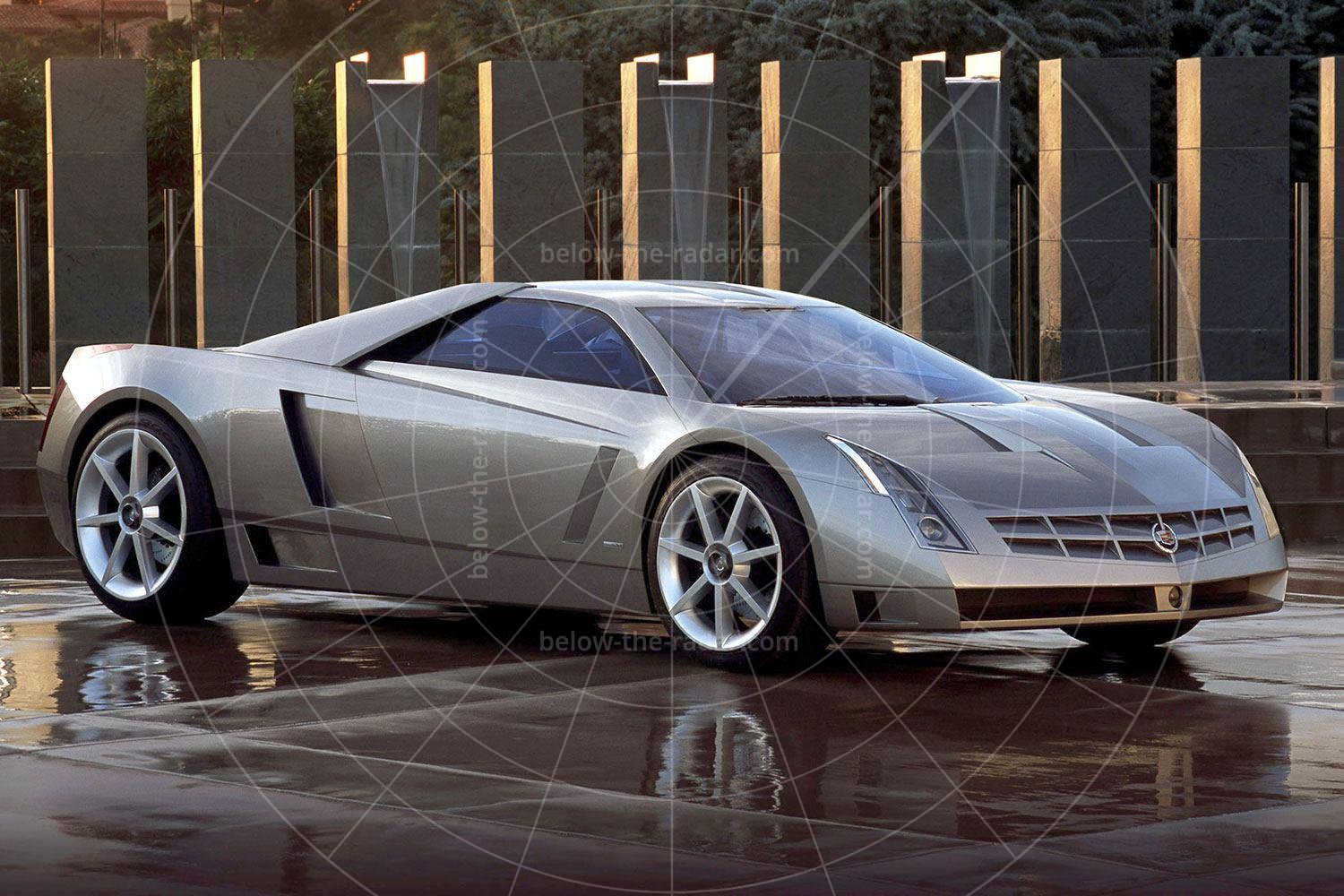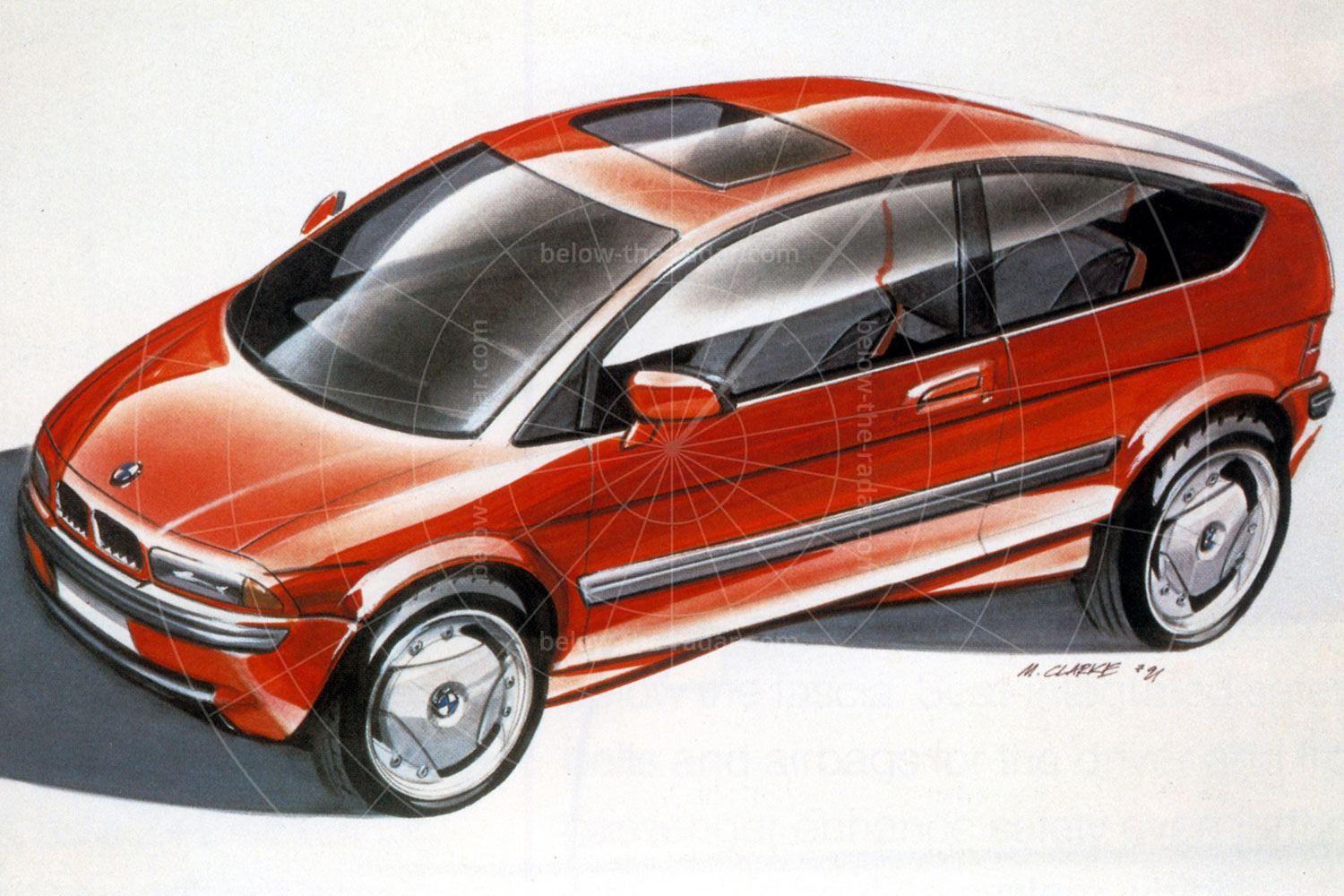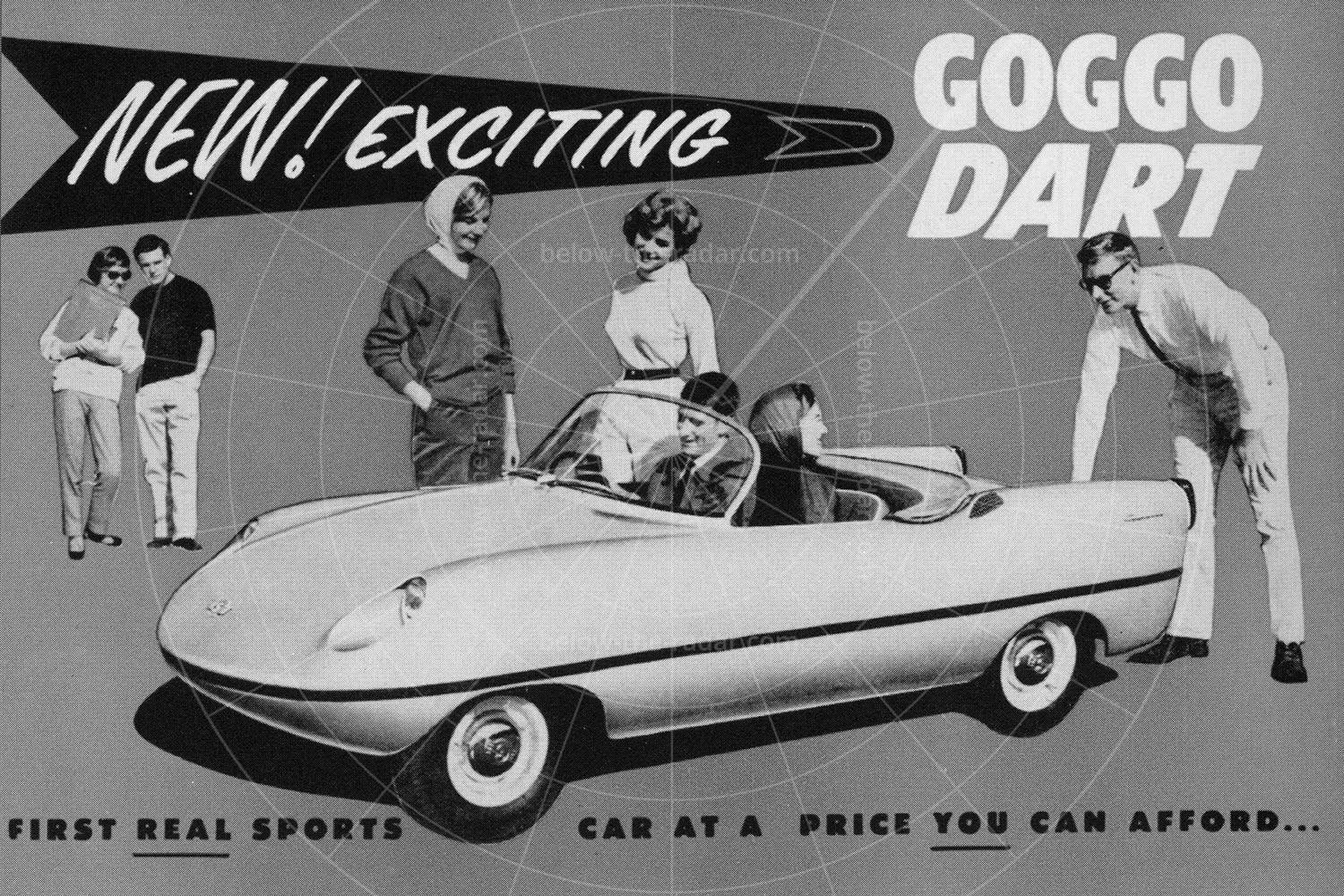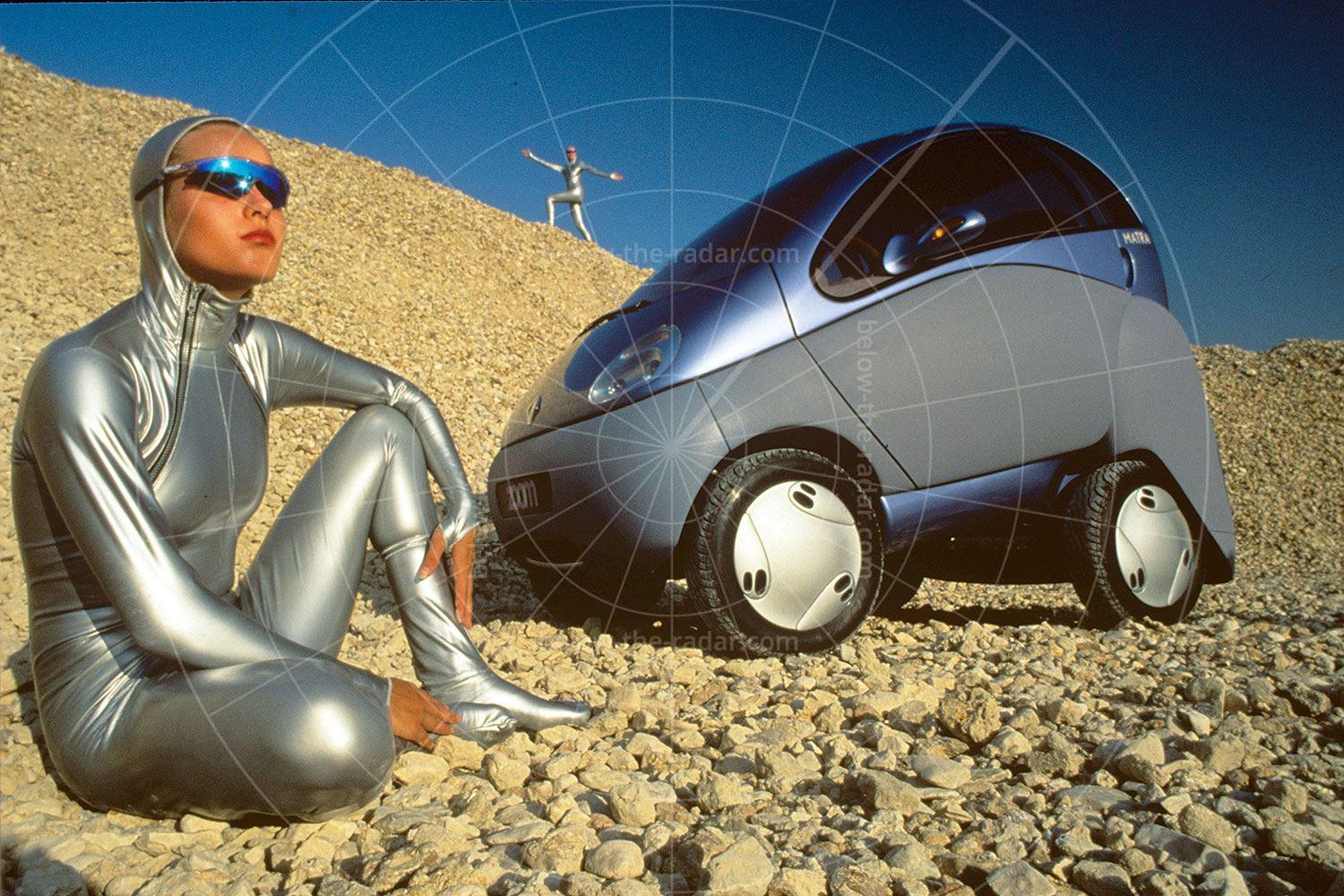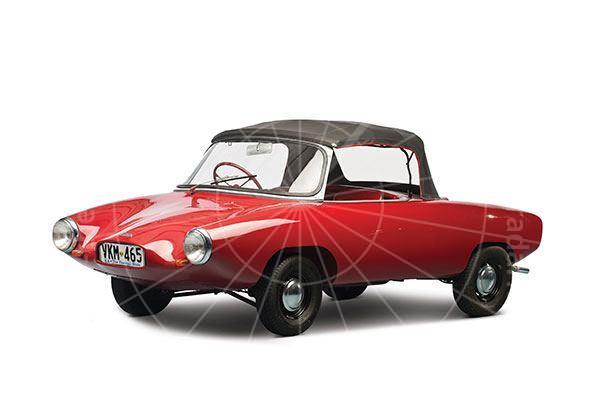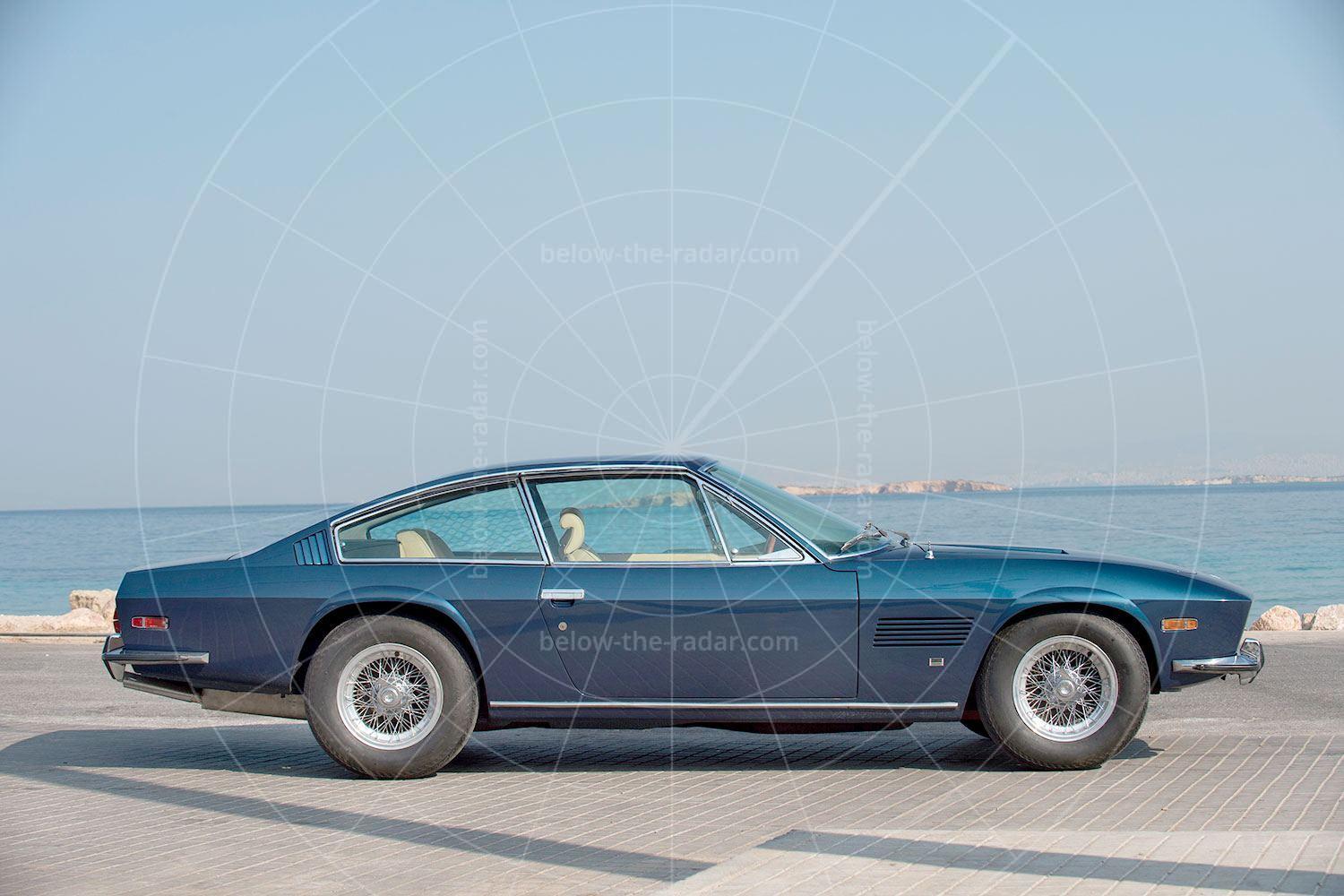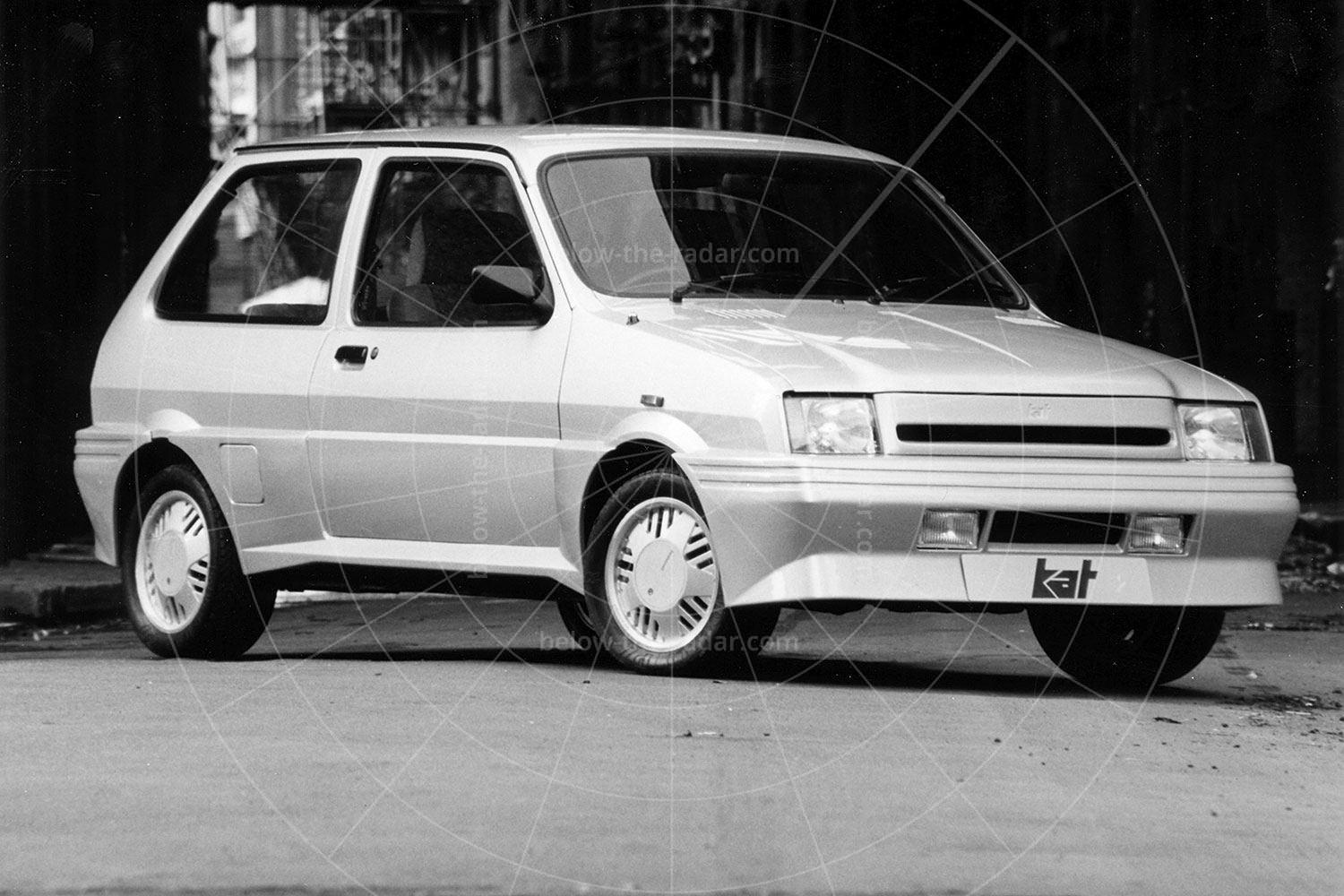From the age of 14, Frank Kurtis was immersed in California car culture. He began his career as an apprentice at Don Lee Coachbuilders in Los Angeles, and eventually developed his talents into a successful business building Midgets, Sprints, and Indy cars. His Kurtis-Kraft cars became the pick of the field from local dirt bullrings to the Indianapolis Motor Speedway, and between racing car orders, he built Hollywood movie cars and one-off specials.
In 1948, a special commission for a one-off roadster based on a wrecked 1941 Buick, inspired Kurtis to design a production sports car. He designed the body and chassis and arranged for Studebaker to supply suspension components and its upcoming overhead-valve V8 engine. The plan called for a reworked Champion frame, with all design and construction done by Kurtis, and Studebaker handling sales through its vast dealer network. But production delays with the Studebaker V8 jeopardised the deal, and Kurtis instead turned to Ford to supply its flathead V8. The slick and stylish body, which had elements of Kurtis’ one-off '41 Buick special, was constructed from glassfibre, steel and aluminum. It was a handsome and capable car, but Kurtis soon lost interest in the project and he sold the rights to the design (for $200,000) after only 15 Kurtis Sports were built.
The man who persuaded Kurtis to sell the design was Earl 'Madman' Muntz of Southern California. The original showman of the used car business, Muntz pioneered the use of television adverts and fostered his Madman persona through a series of zany TV spots and catchy advertising slogans. The Madman schtick was a good act, and his dealerships became tourist attractions. In reality, Muntz was a sharp and intelligent businessman and engineer, who later found considerable success in designing and selling consumer car stereos and televisions. Muntz was known to do just about anything for self-promotion, so a flamboyant sports car with his name on the back was just the ticket to drive even more traffic into his showrooms.
To transform the Kurtis Sports into the Muntz Jet, Frank Kurtis stretched the chassis by 13 inches (to 113 inches) to accommodate a pair of rear seats. Softer and more luxurious than the Kurtis Sports, the Muntz Jet boasted semi-unitary construction, bucket seats with console storage, a padded dash, and the option of a liquor cabinet and ice chest in the rear. It was one of the quickest cars of its day, and a fascinating precursor to the Thunderbird and Corvette.
Sadly for Muntz, the list price of $5500 was enough to dampen enthusiasm, and after just 198 Jets had been built, production ceased in 1954. Muntz claimed that he lost as much as $1000 per car, the killer being the high cost of labour, which was reckoned to be around $2000 per Jet, with the upholstery weighing in at $600 on its own. Muntz used high-quality Vinylite instead of leather in a bid to keep costs down; ultimately his choice of trim would prove to be more durable than leather as it was produced to such a high standard.
The first 28 cars were built in Kurtis's factory in Glendale, California but within months the assembly line was uprooted and shipped to Evanston, Illinois. By 1952 it would move once again, to Chicago. Those first Glendale-built Jets were fitted with Cadillac’s new 331ci OHV V8, but this was both unreliable and costly, so the Evanston-made cars featured a Lincoln-sourced V8 instead.
Rather than selling through a network of dealers, Muntz sold all Jets direct to buyers from the Glendale (later Evanston) premises. His aim was to target celebrities and to a point he succeeded, with singer Mario Lanza taking delivery of a Jet, as did fighter Jersey Joe Walcott, 'it girl' Clara Bow and actress Gloria de Haven. Muntz Jets also appeared in numerous films including Johnny Dark, The Caddy, and Marry Me Again.
Despite the costly hand-built nature of the Jet, build quality was still a problem, particularly with the hard top which was the only form of weather protection. There was no soft top and nowhere to store the hard top once away from base, so it was either on or off. And when it was on, it wasn't very good at keeping rain out of the car, with leaks a major problem.
In 1951 Muntz hired Indy winner Sam Hanks to introduce the Jet to the press, which impressed Road & Track, which proclaimed in its September 1951 issue:
The Muntz Jet was not intended as a true sports car but as a deluxe high-speed convertible touring car in the American manner. As such, it offers the fastest acceleration and highest top speed of any American-built car available from the salesroom floor today. For those who wish to travel rapidly, carry five passengers, be protected from the weather, and who have the necessary change, this is the car.
Whereas Road & Track managed 0-60mph in 12.3 seconds, Popular Science also put a Jet through its paces and managed to do the same sprint in just 8.9 seconds. Presumably Road & Track forgot to release the hand brake; either that, or Popular Science was going down a very steep hill at the time.
Either way, the Muntz Jet was a heavy car, with its 3750lb (1704kg) kerb weight, which was a massive 1450lb (659kg) more than the aluminium-and-glassfibre KSC that had sired it. The extra weight came from the all-steel construction which included a massively strong box-section chassis. Muntz claimed that the Jet was so over-engineered that even if one was driven into a barrier at 100mph it wouldn't crumple, although there's no record of him putting that to the test in a quest for the publicity that he craved so badly.
The Muntz pictured was sold by Hyman Ltd, is the second car built (#M-102), and it first appeared in Muntz publicity photos featuring designer Frank Kurtis and factory test driver (and 1957 Indy 500 winner) Sam Hanks. One of the first 28 cars built by the Kurtis Kraft shop in Glendale, California, it has aluminum door skins and wings rather than the steel items used on the later Evanston-built cars. Not only were the steel panels cheaper, but they dented far less easily; the final half a dozen or so Jets were fitted with glassfibre wings to cut weight and cost.
After its time as a promotional car it was sold to a private buyer and led an uneventful early life. In 1969 it was bought by a man who owned another Muntz; he purchased #M-102 for $60 to use it as a parts car. A few years later a garage fire damaged his other Muntz, and he eventually decided to restore #M-102 using the fire-damaged car for parts. These cars were crudely built, often with flamboyant and garish color schemes, and the goal of this restoration was to highlight the Jet’s unique character while adding a welcome dose of sophistication and modernised performance.
The task of re-imagining the Muntz from the ground up began in earnest in the early 2000s. The owner employed chassis specialists SRIII Motorsports of New Lenox, Illinois, to thoroughly re-engineer the structure and suspension. The wealth of exquisitely engineered improvements includes air ride, power rack and pinion steering, a Moser-built Ford 8.8-inch rear end, four-wheel power disc brakes, QA1 adjustable dampers, and much more.
The 331ci Cadillac OHV engine was completely rebuilt and bored to 353ci, and dyno tests showed an output of 325bhp and 350lb ft of torque. The GM 700R4 automatic transmission sends its power via a custom driveshaft to the rear axle. Fabulous and extremely rare period-correct speed equipment includes an Edelbrock 6x2 'log' intake with six Stromberg 97s, Hildebrandt valve covers and oil filter housing, and a highly desirable W&H DuCoil distributor.
| Vital statistics | |
|---|---|
| Produced | 1949-1954, America |
| Number built | 198 |
| Engine | Front-mounted, V8 |
| Transmission | 4-speed auto, rear-wheel drive |
| Top speed | 112mph |
| 0-60mph | 8.9 seconds |
| Price | $5500 (1951) |
Many thanks to Hyman Ltd for the use of its pictures to illustrate this article.

